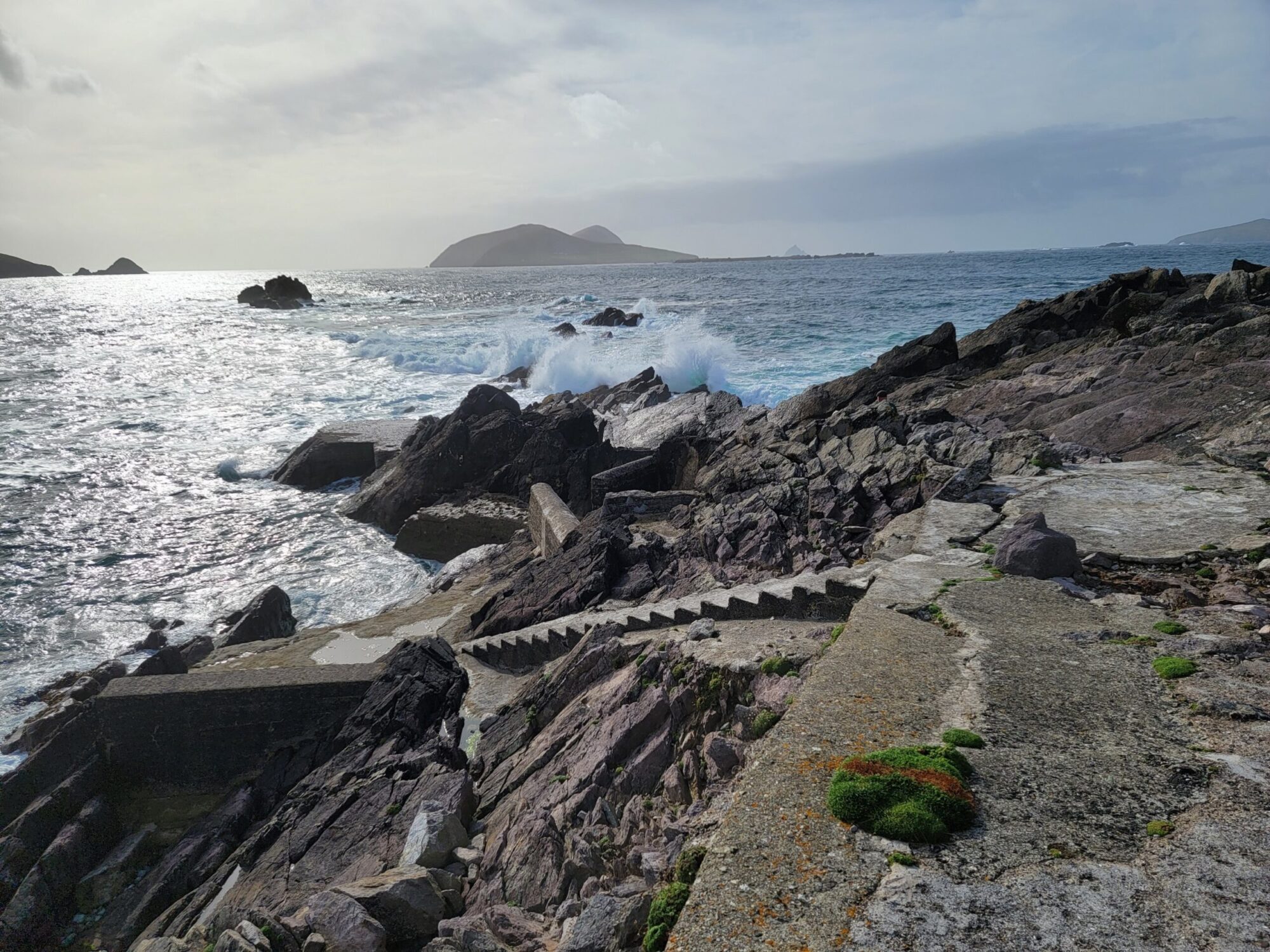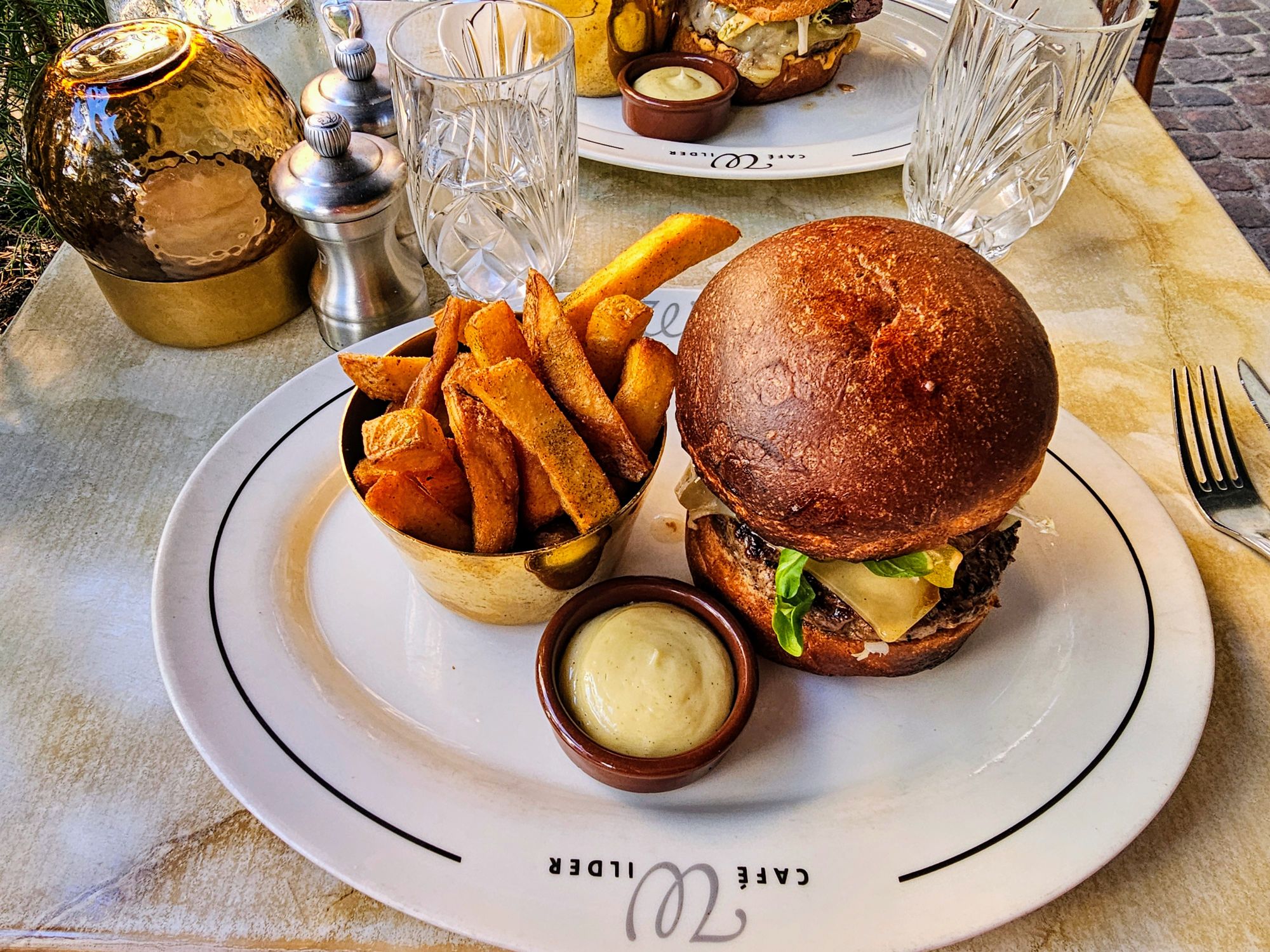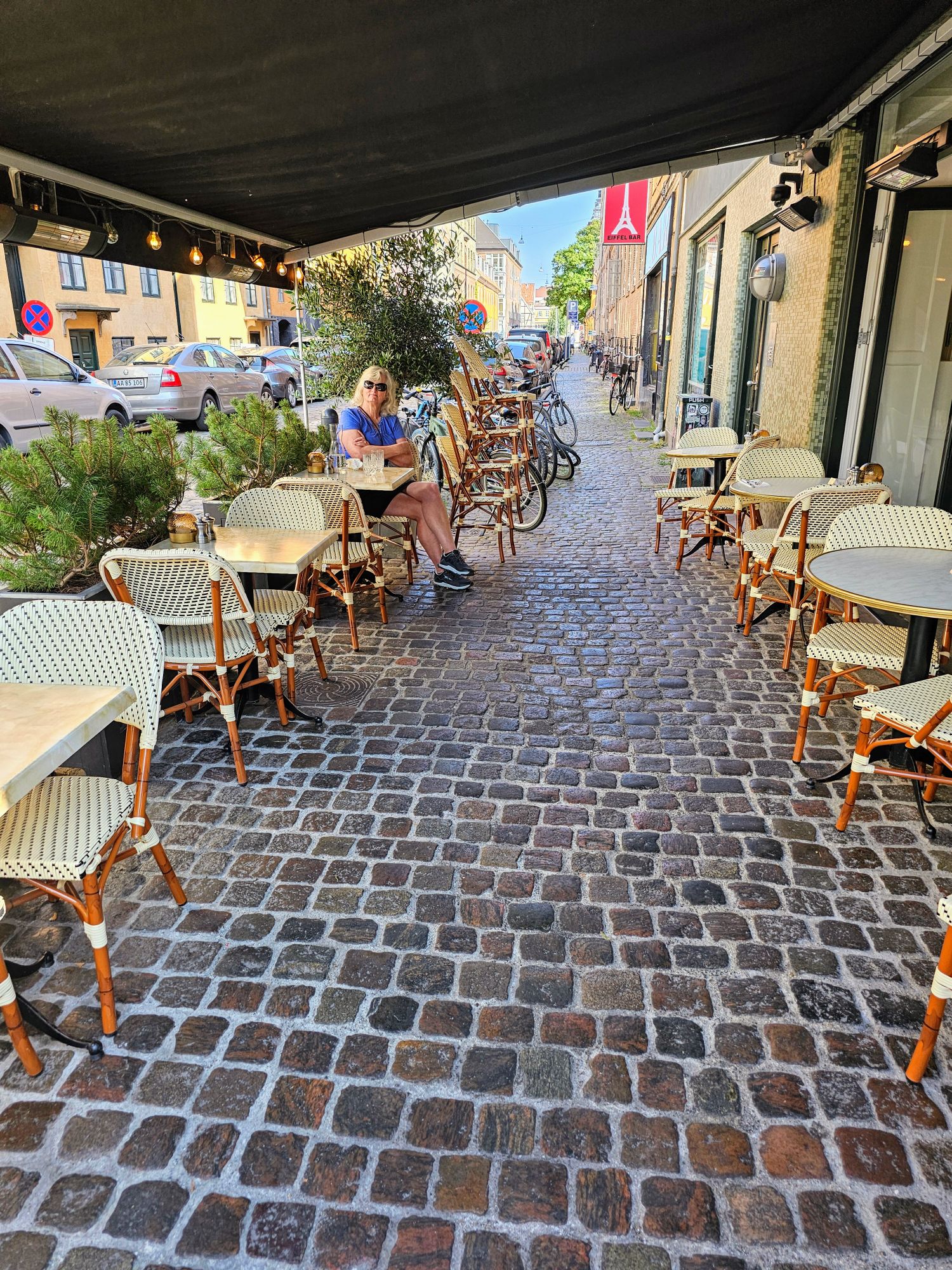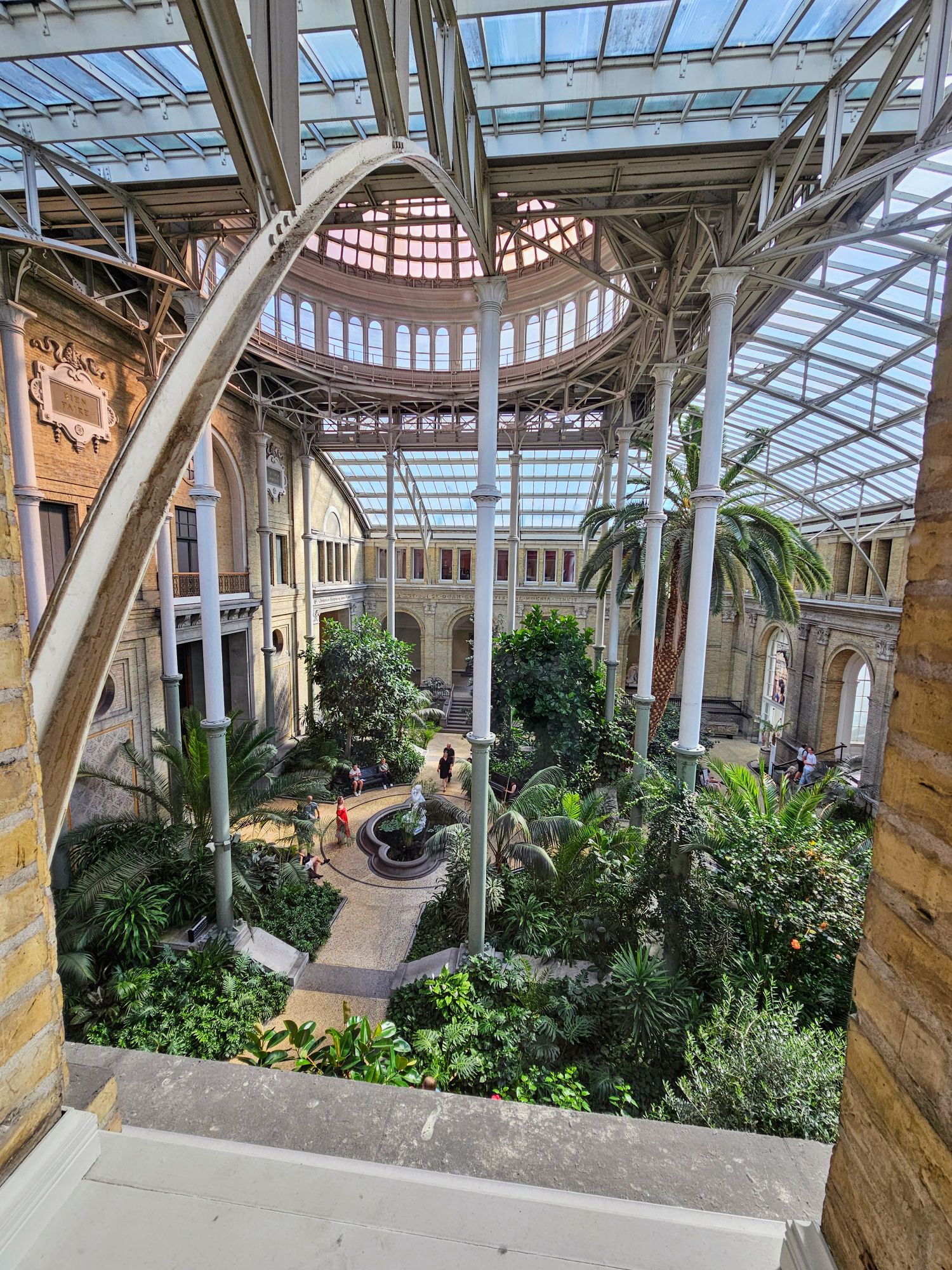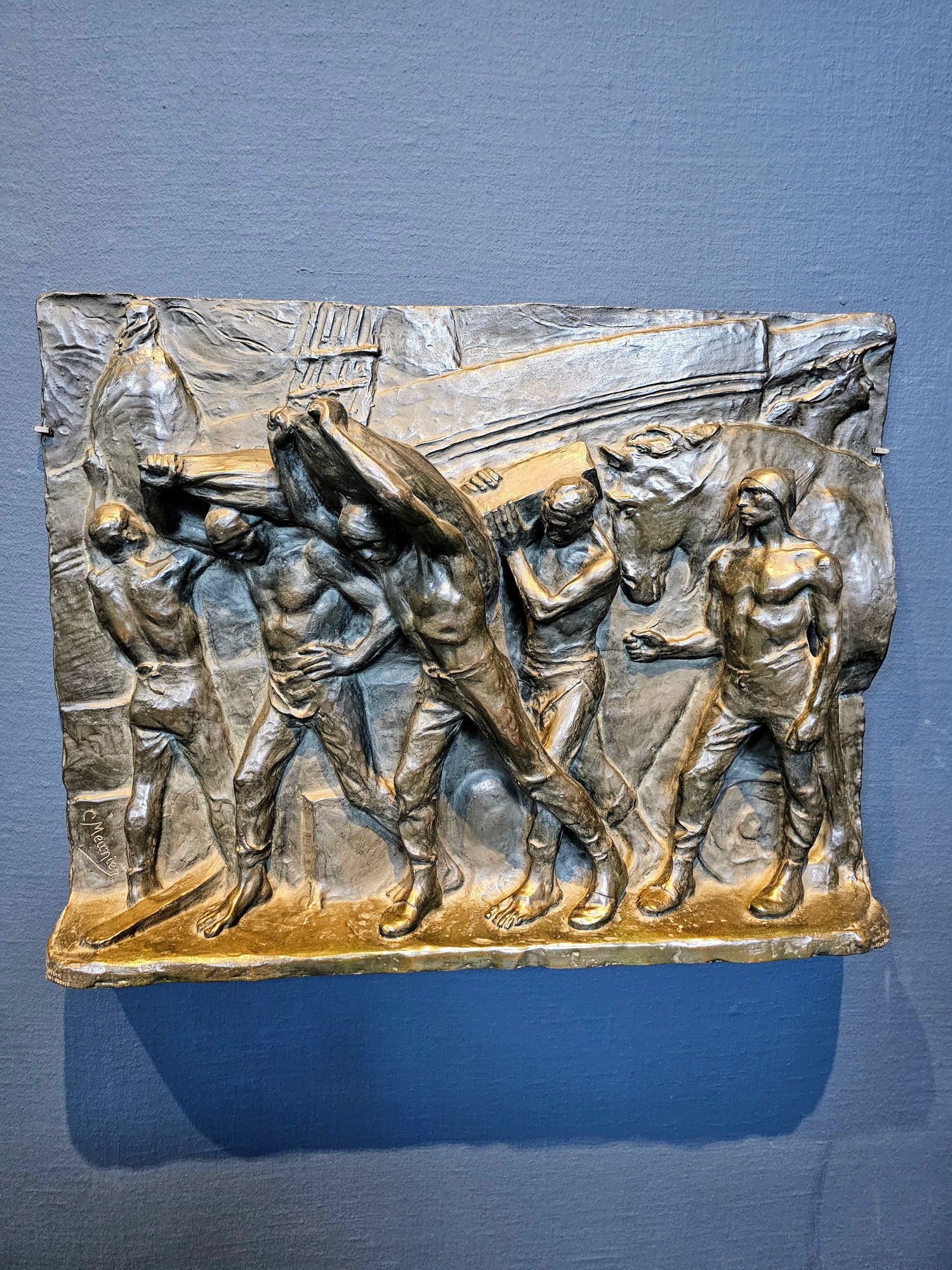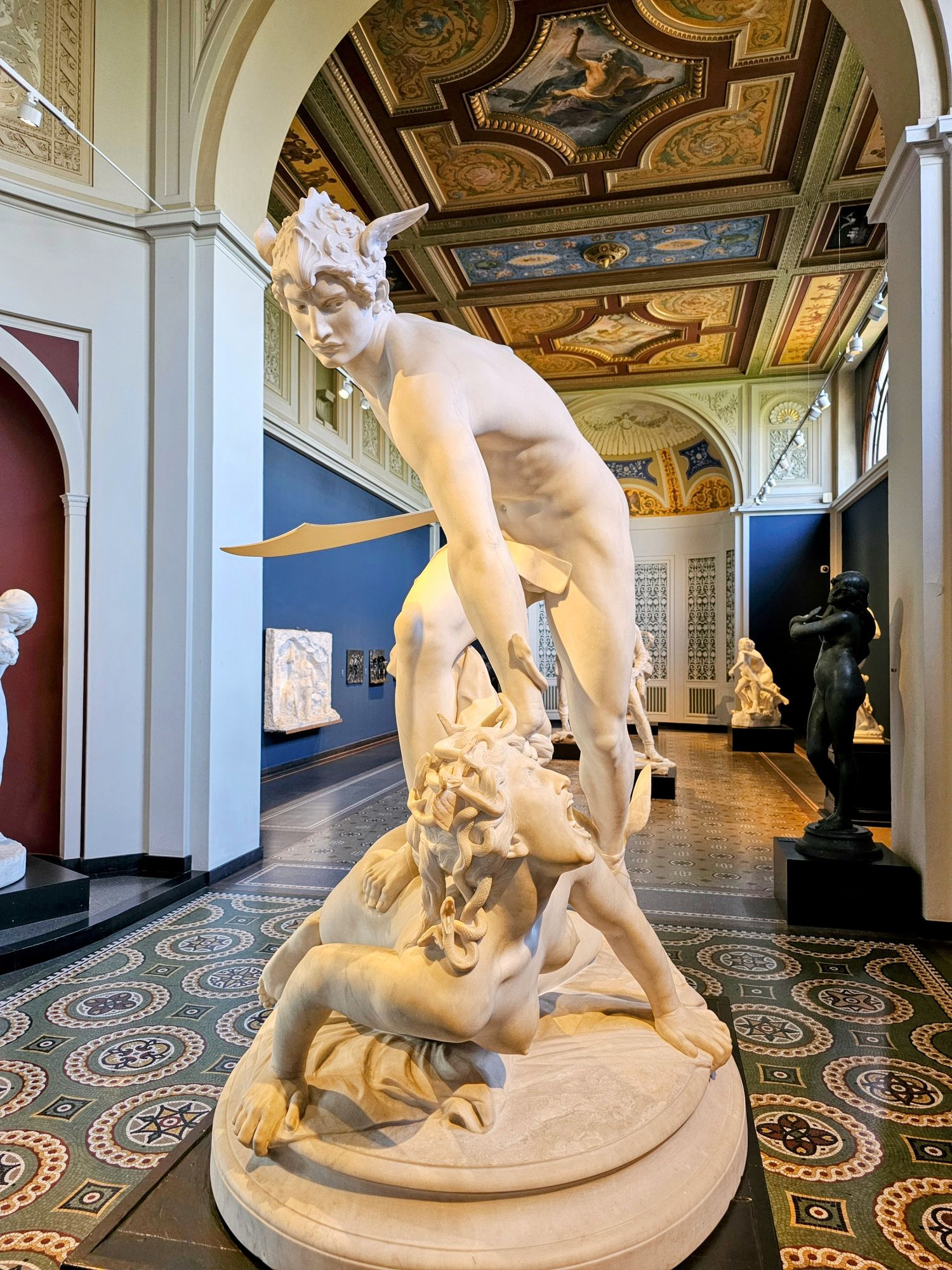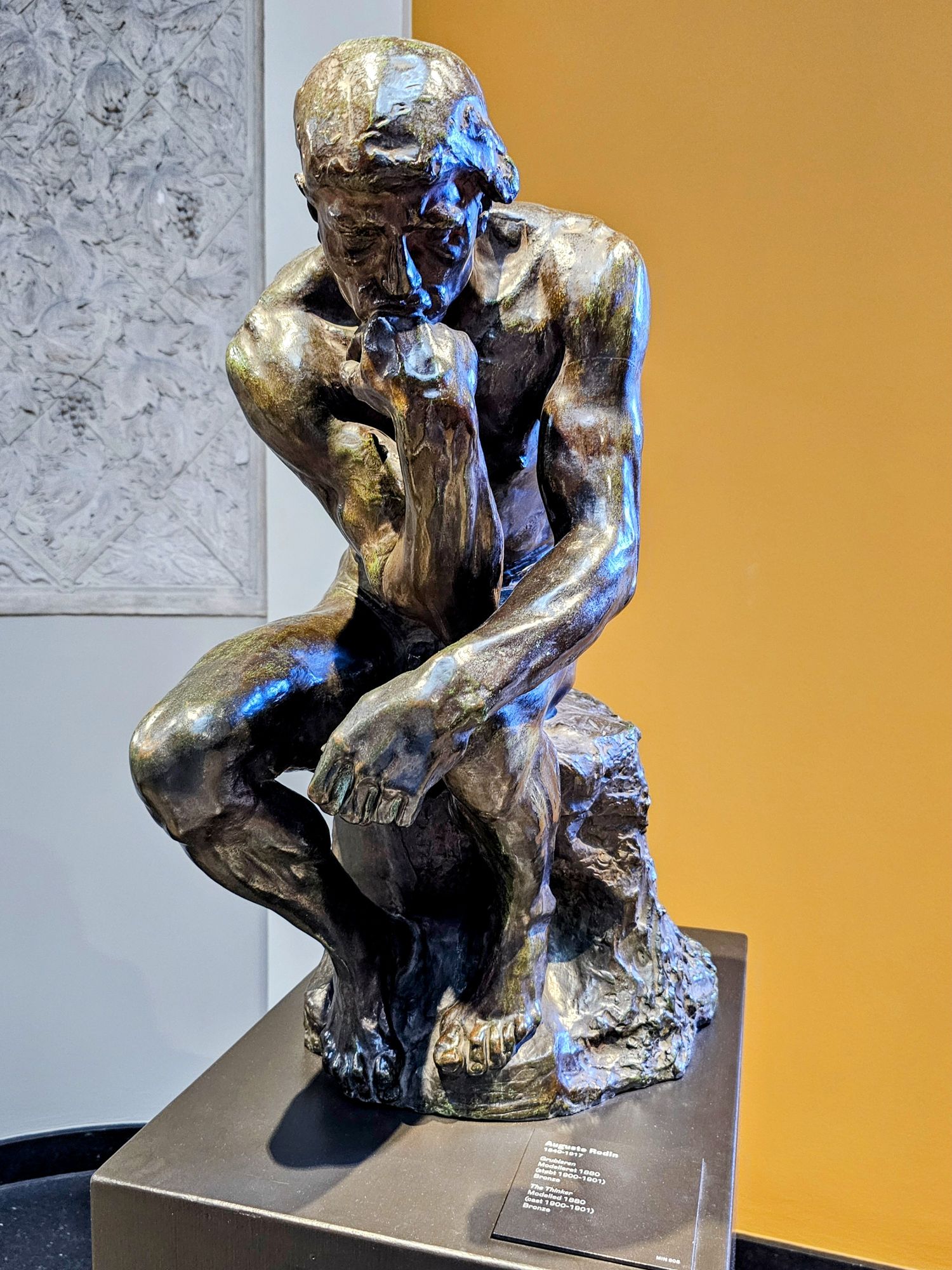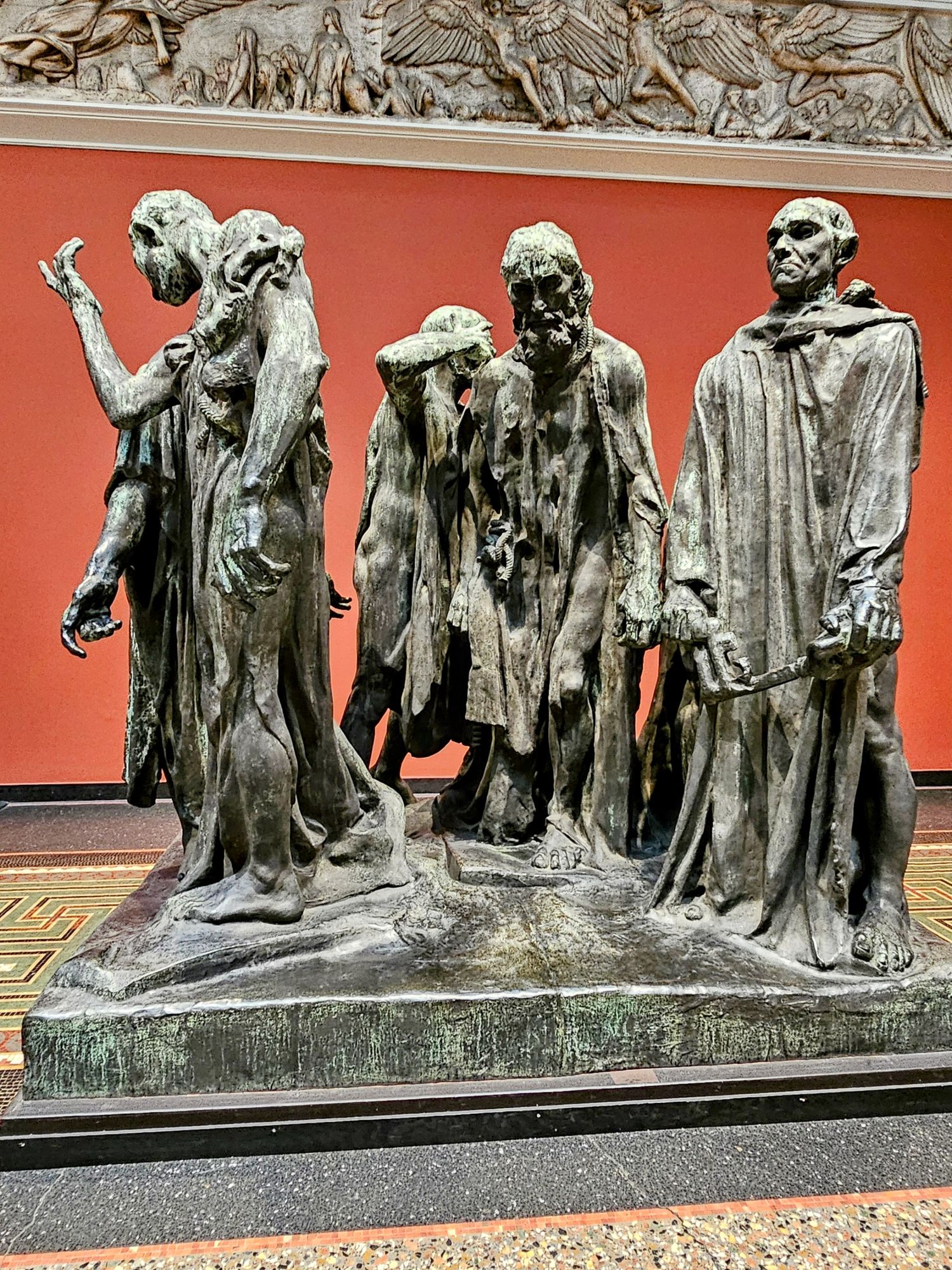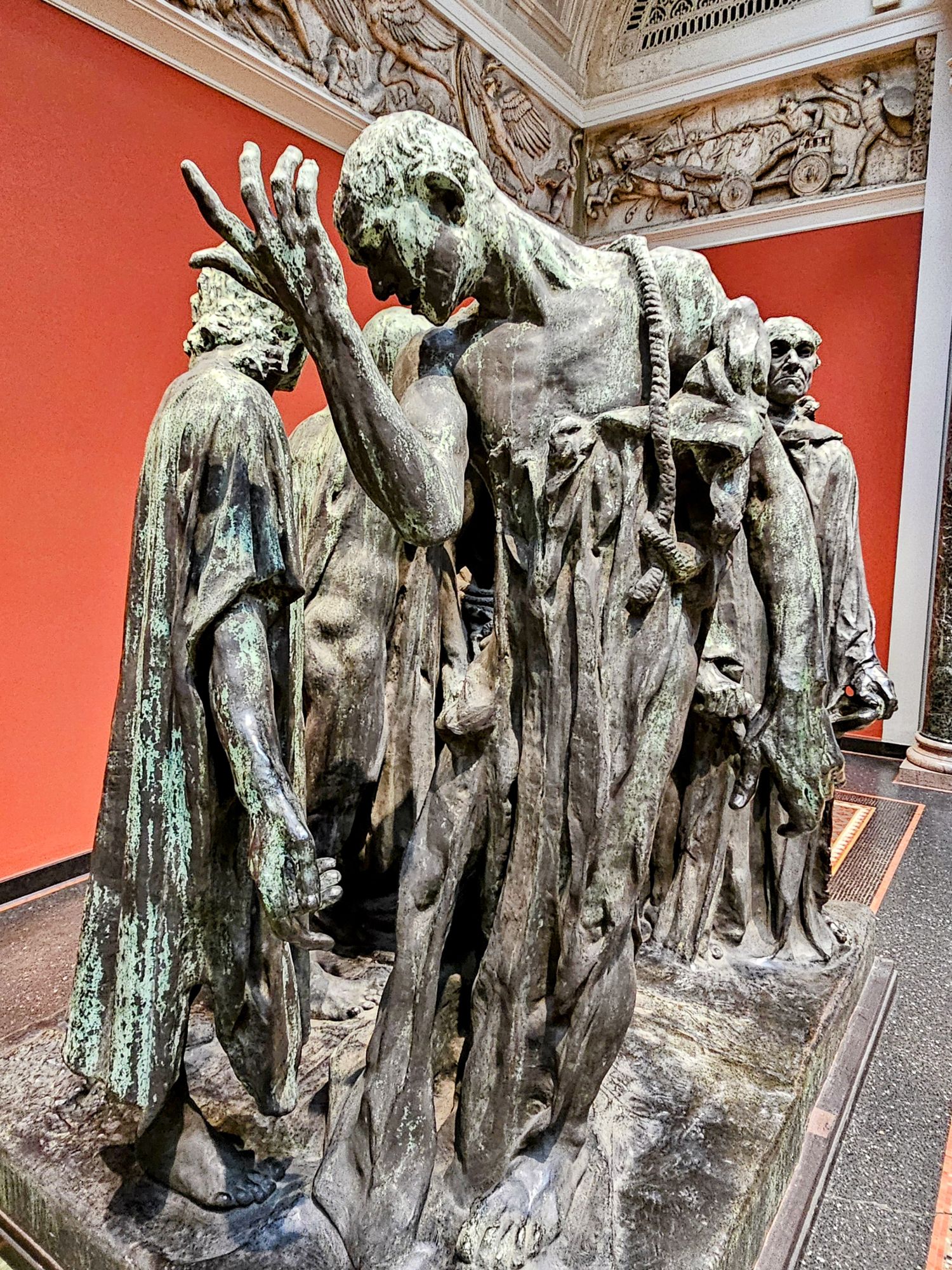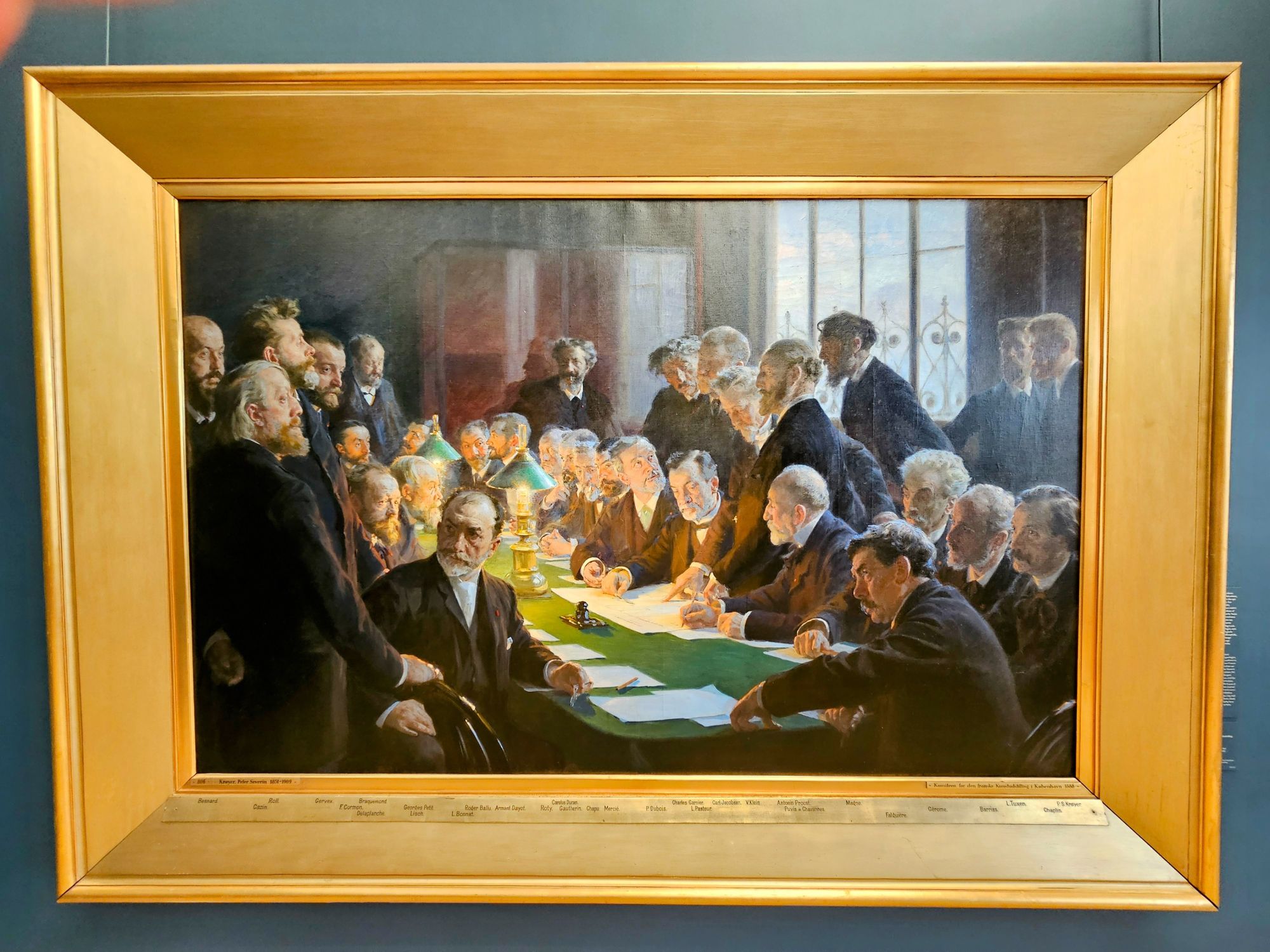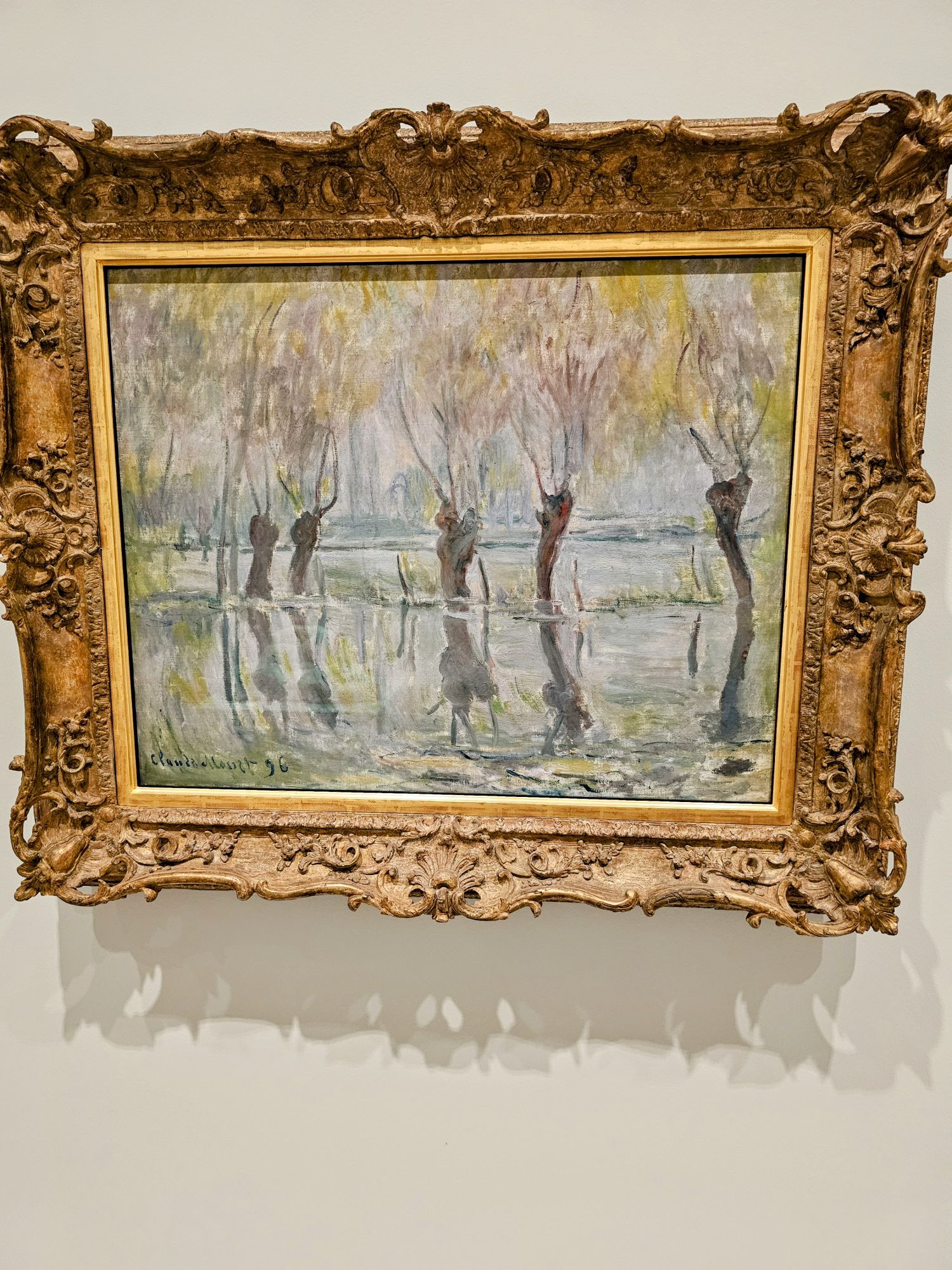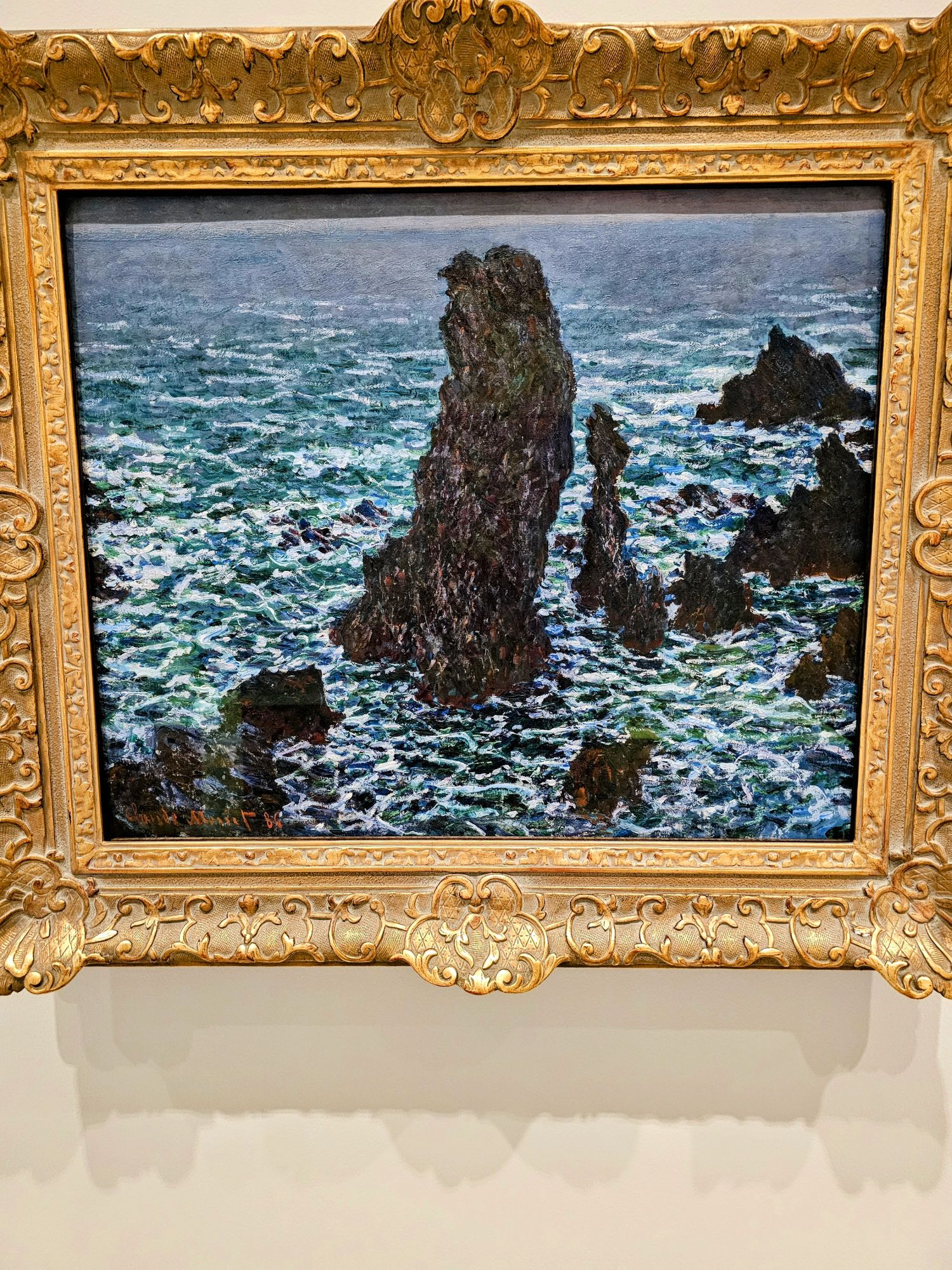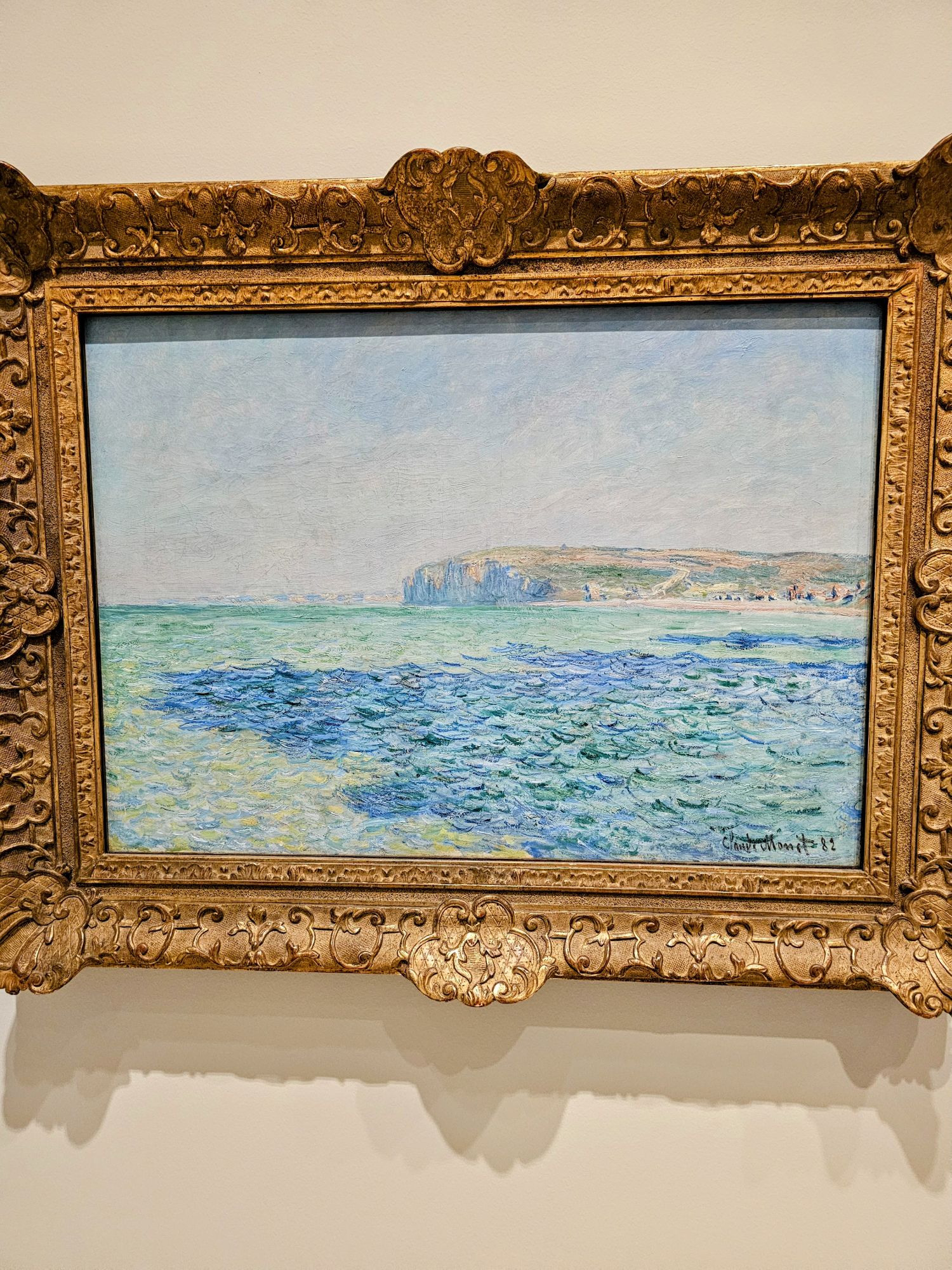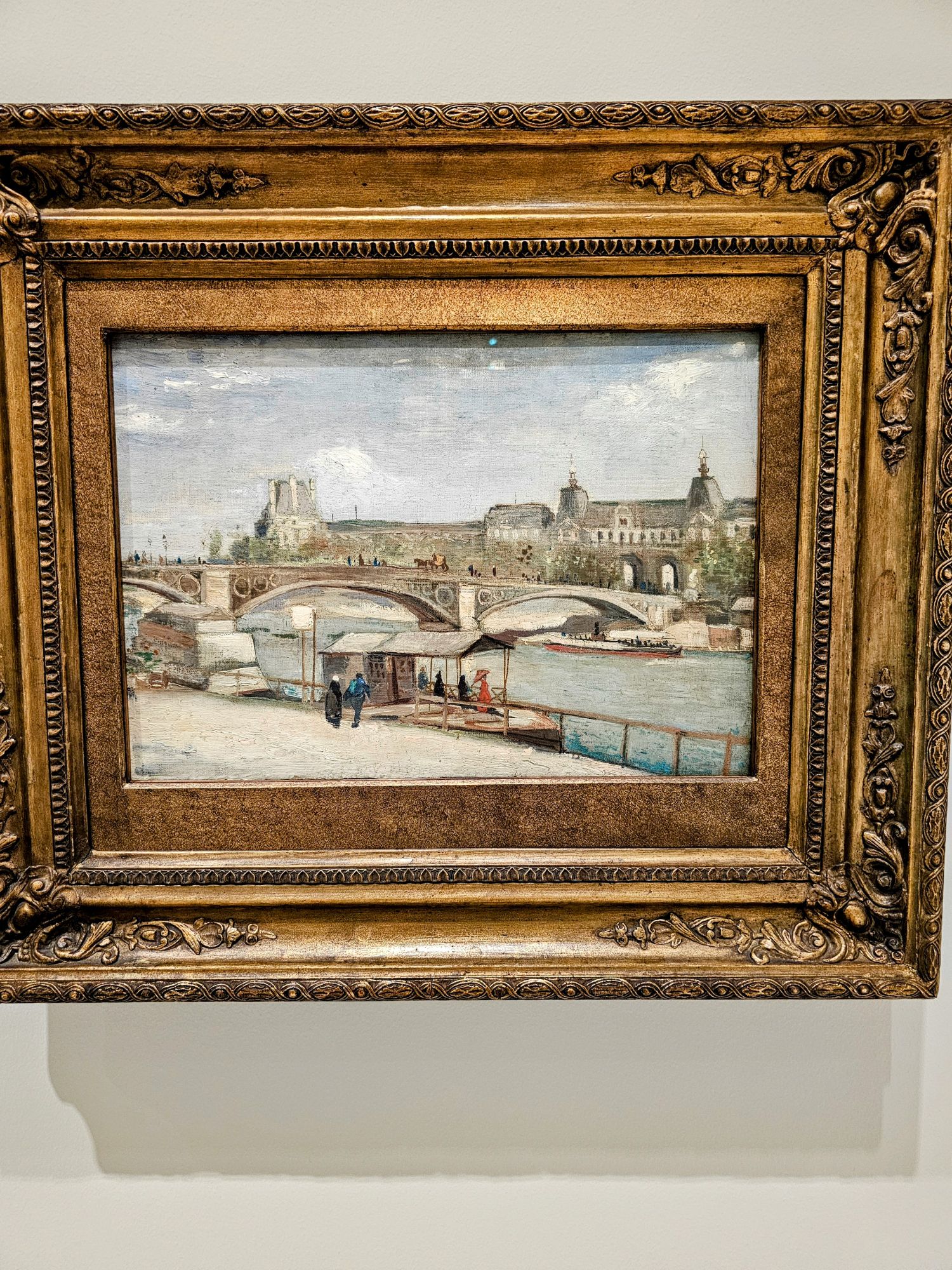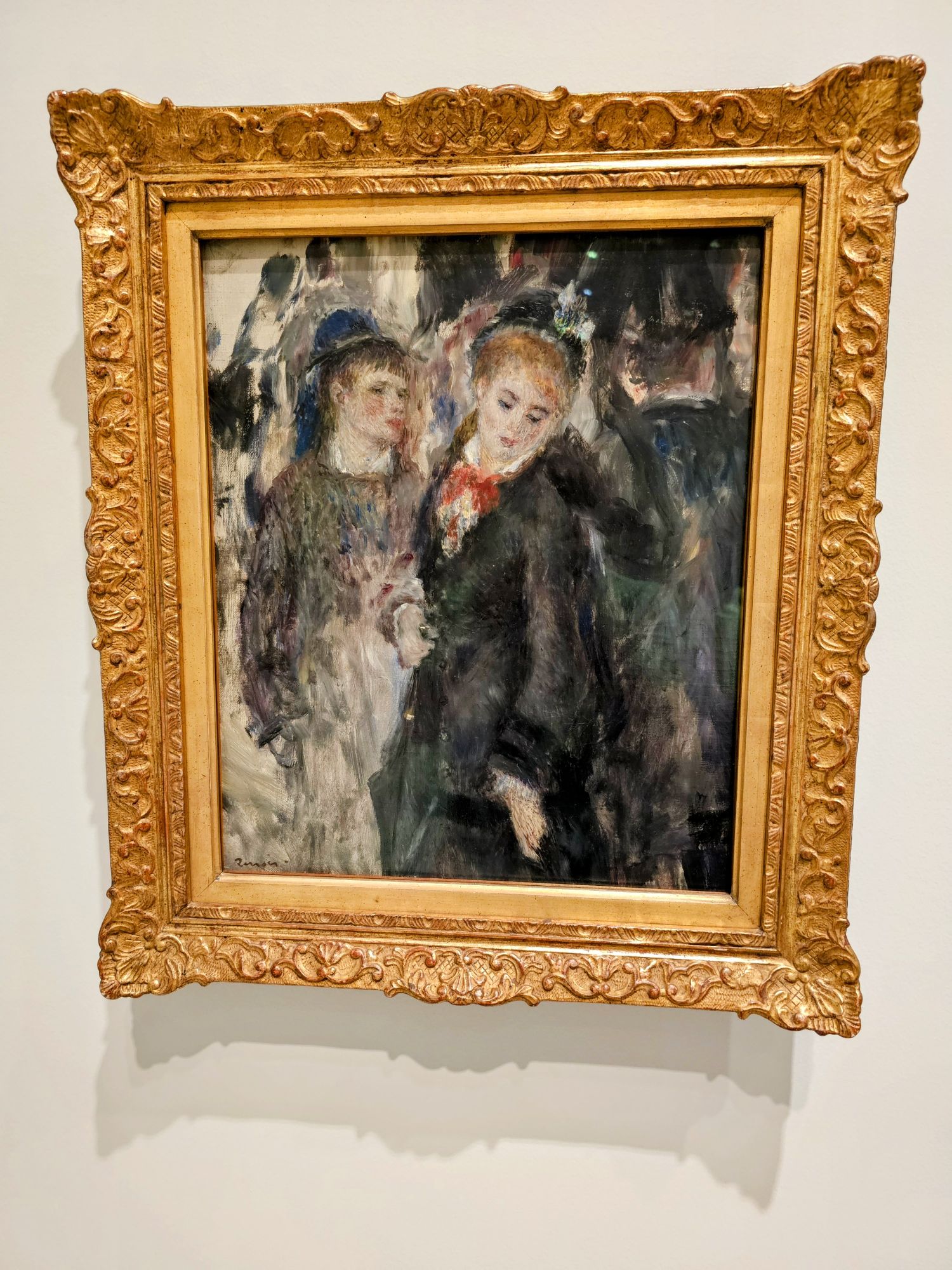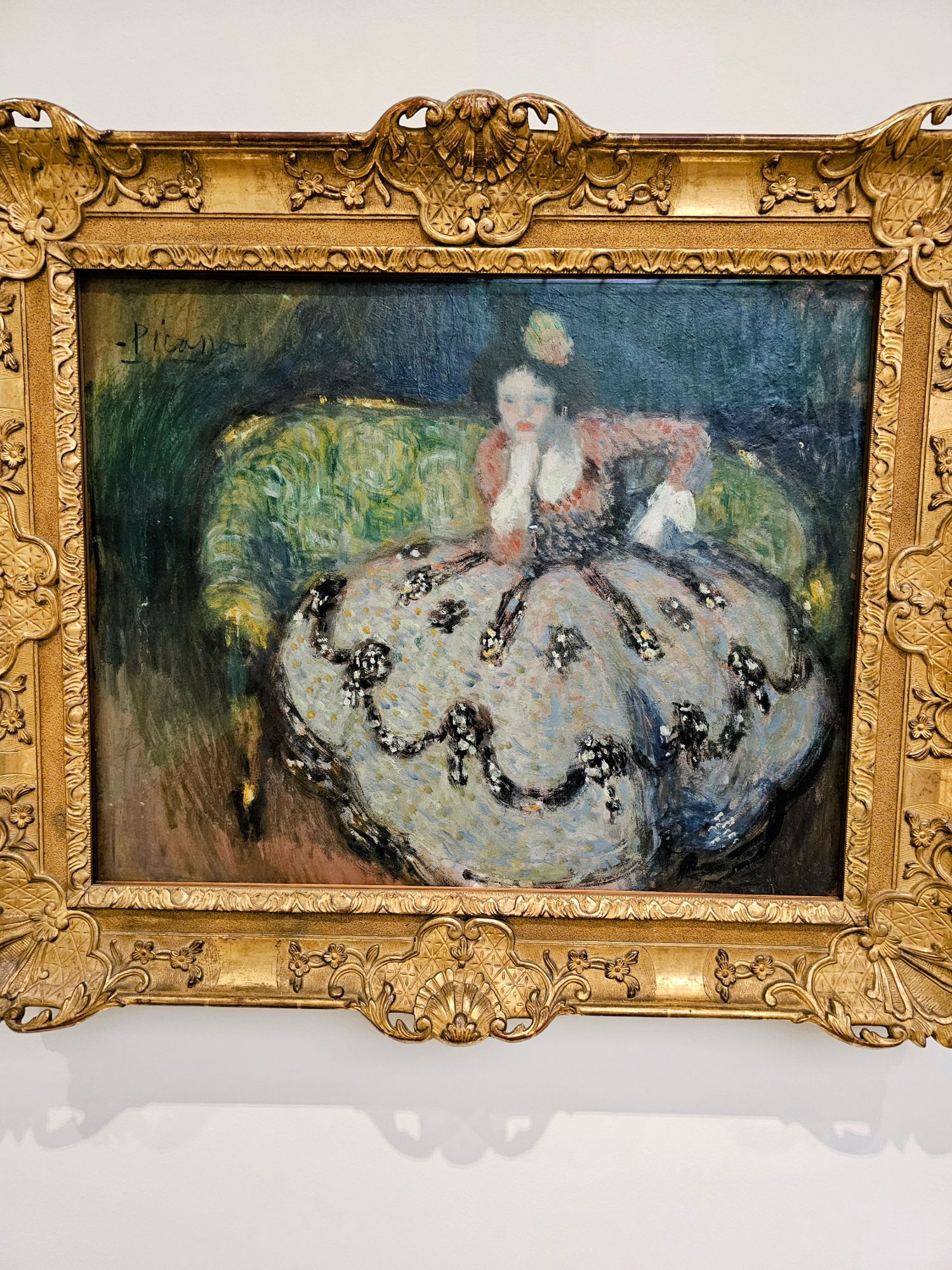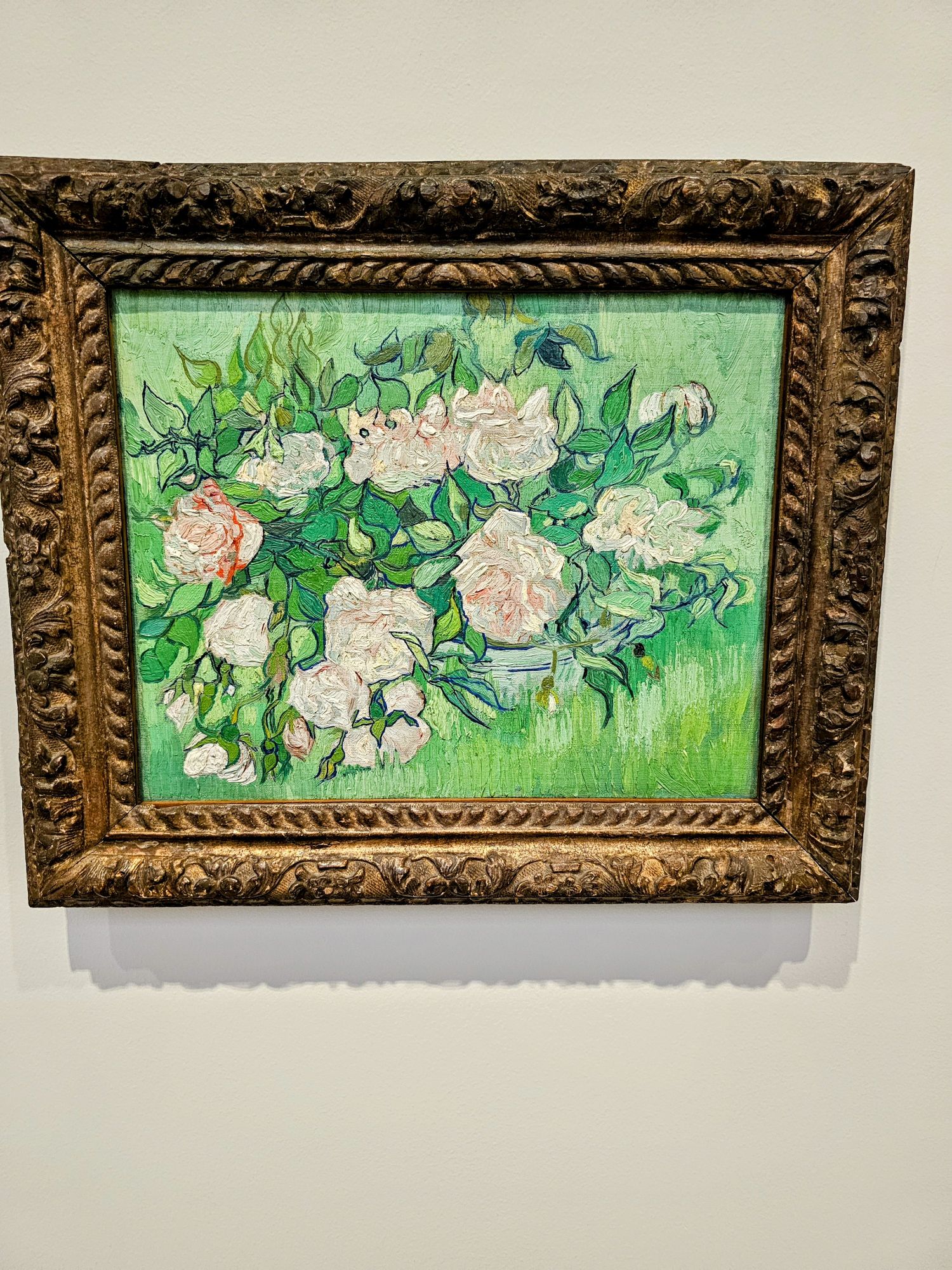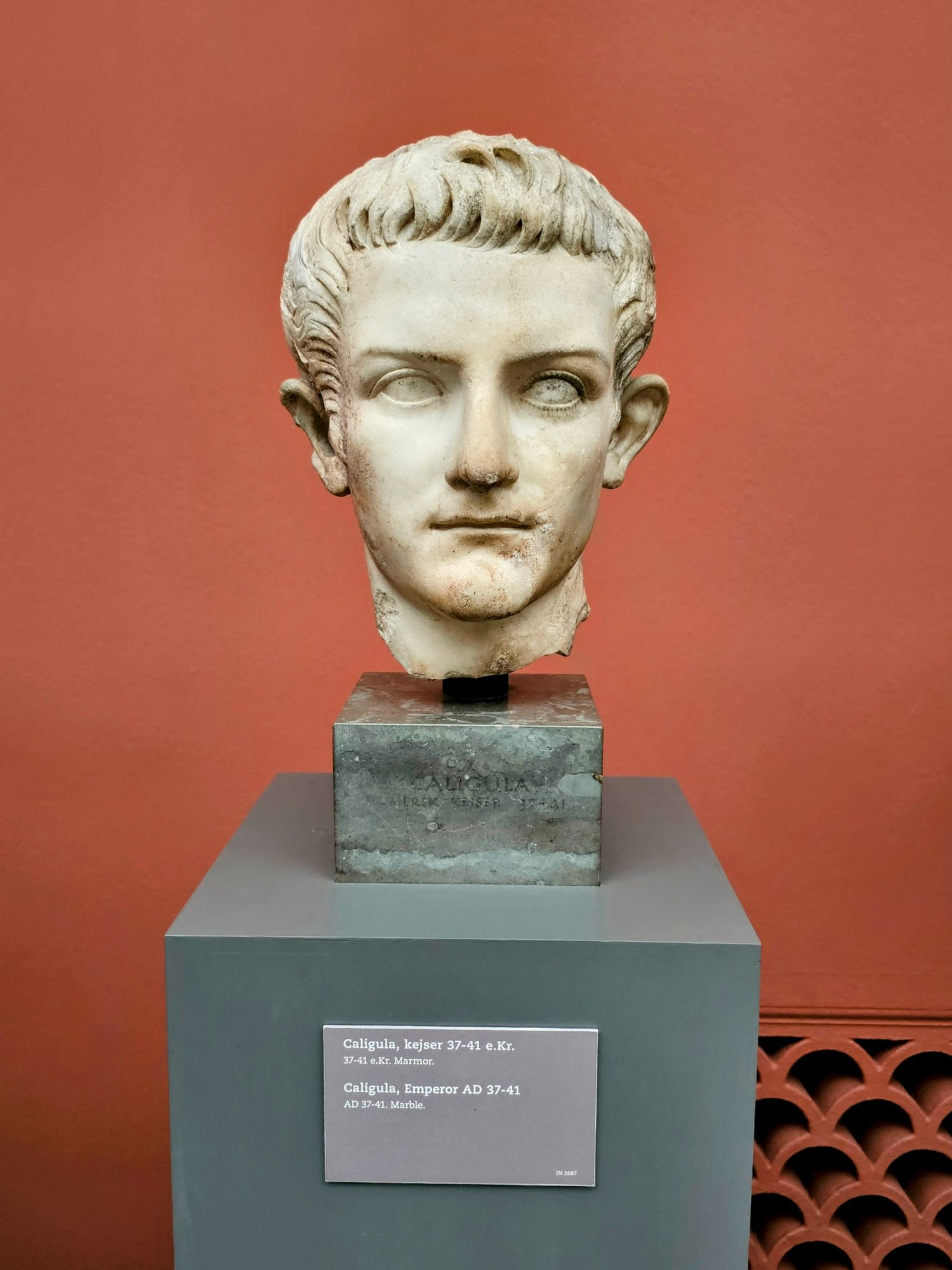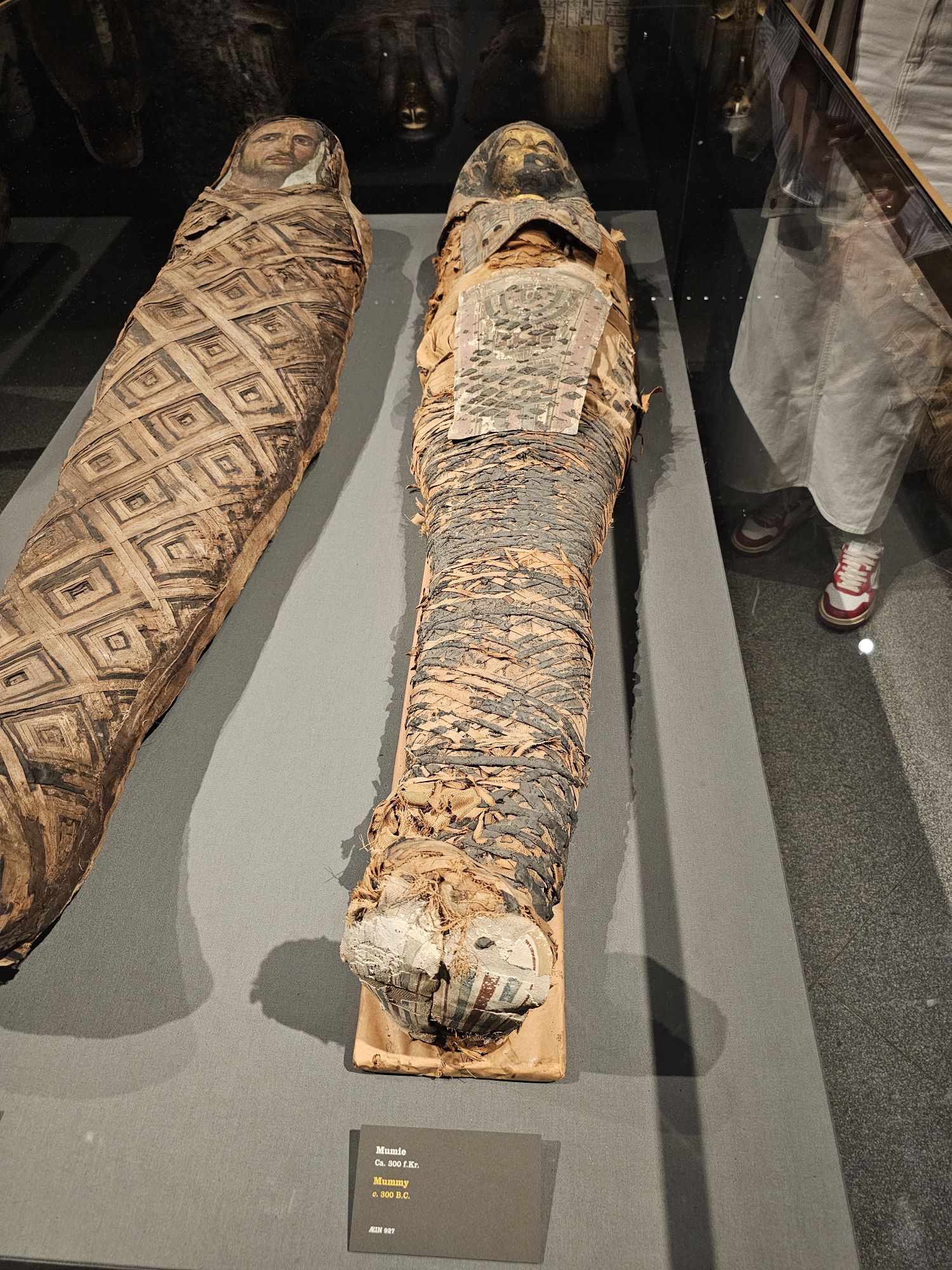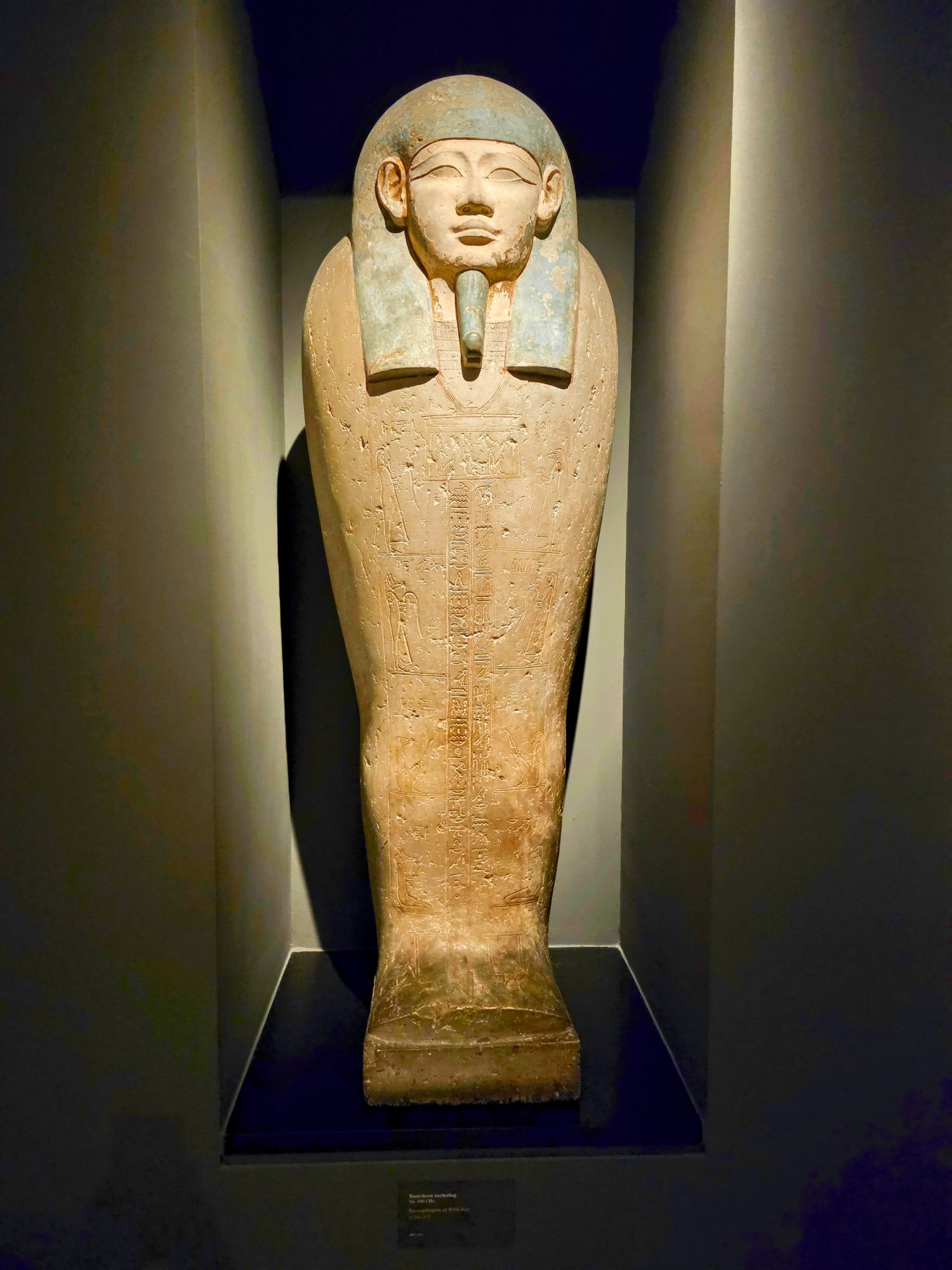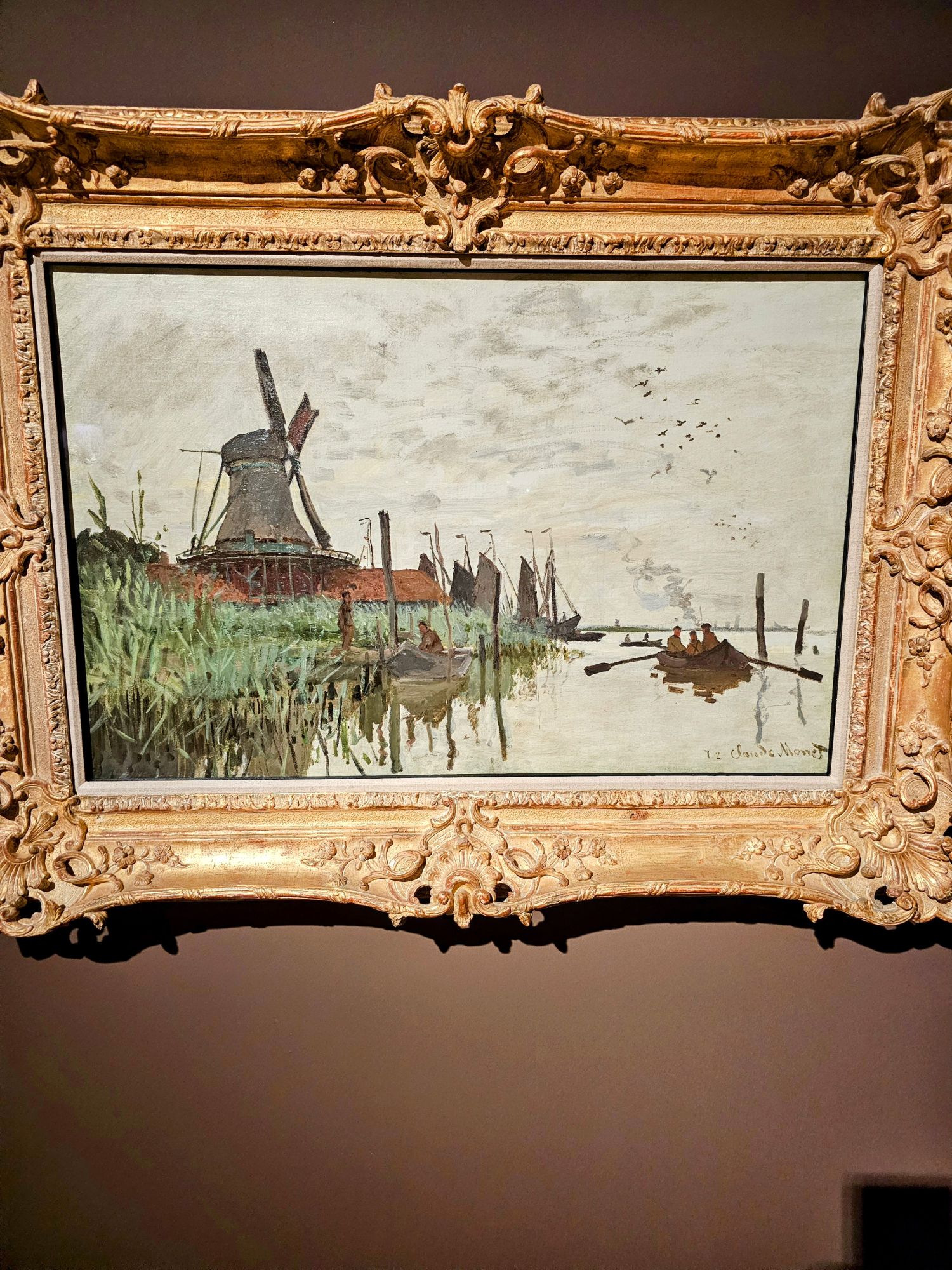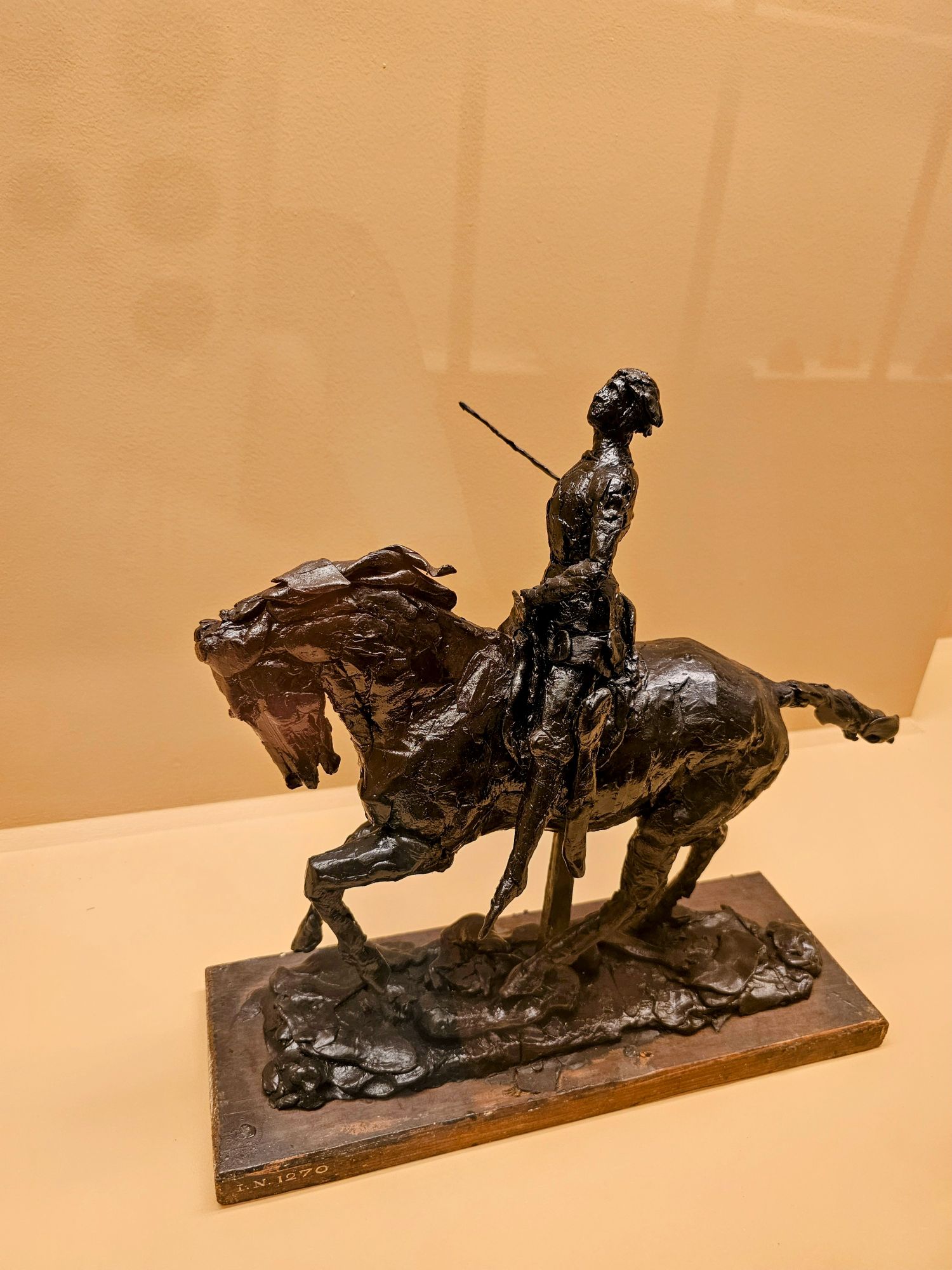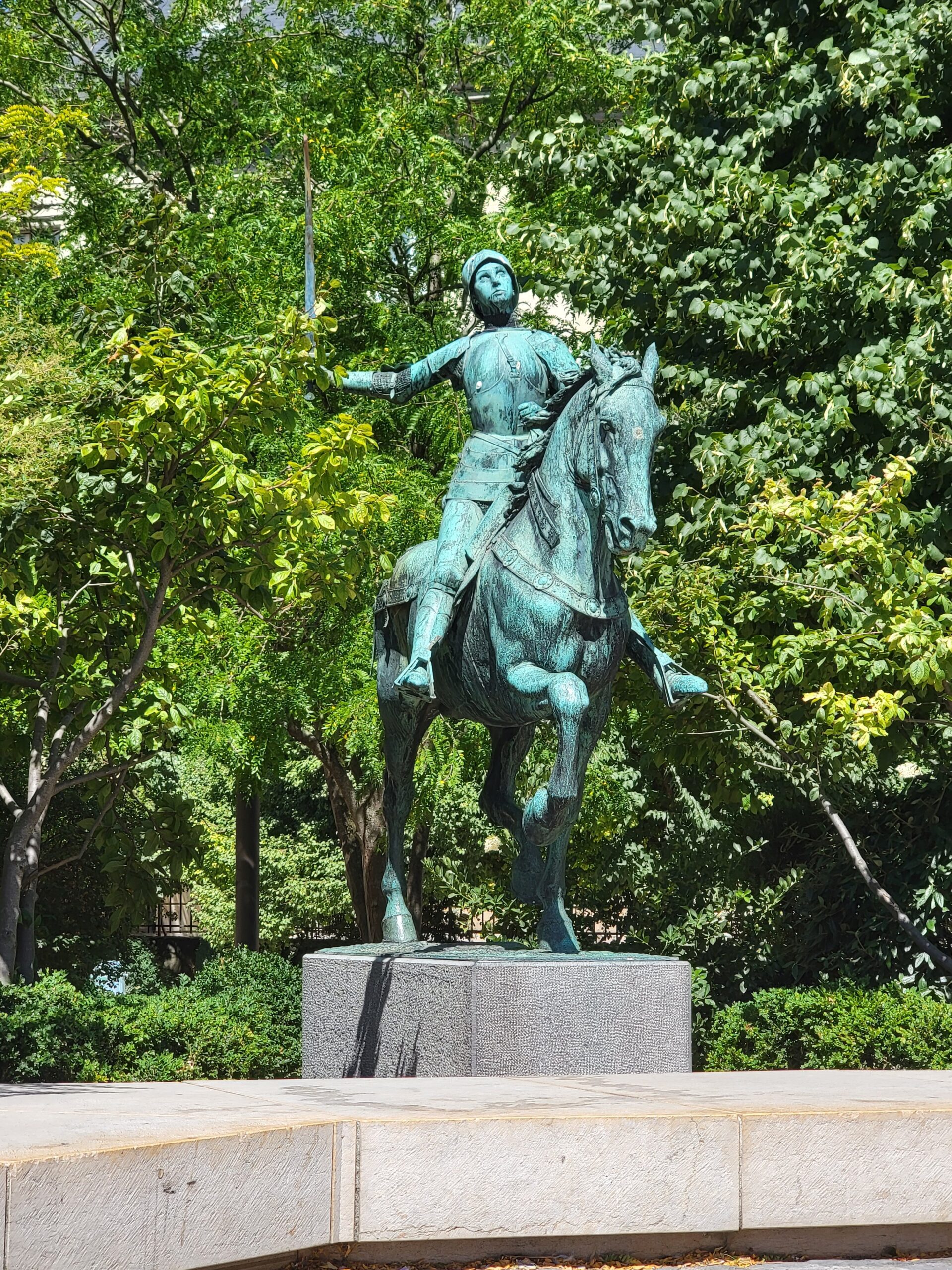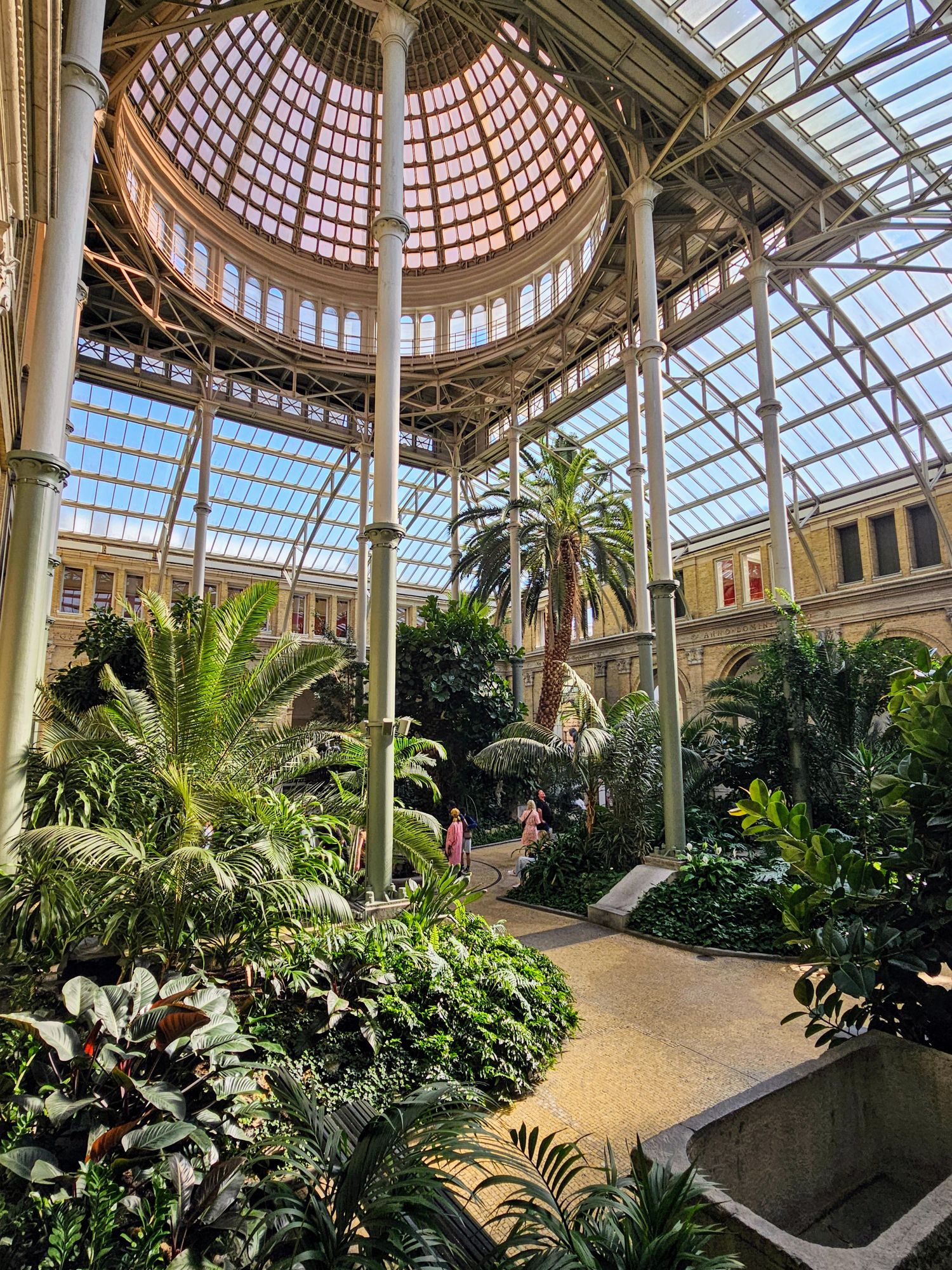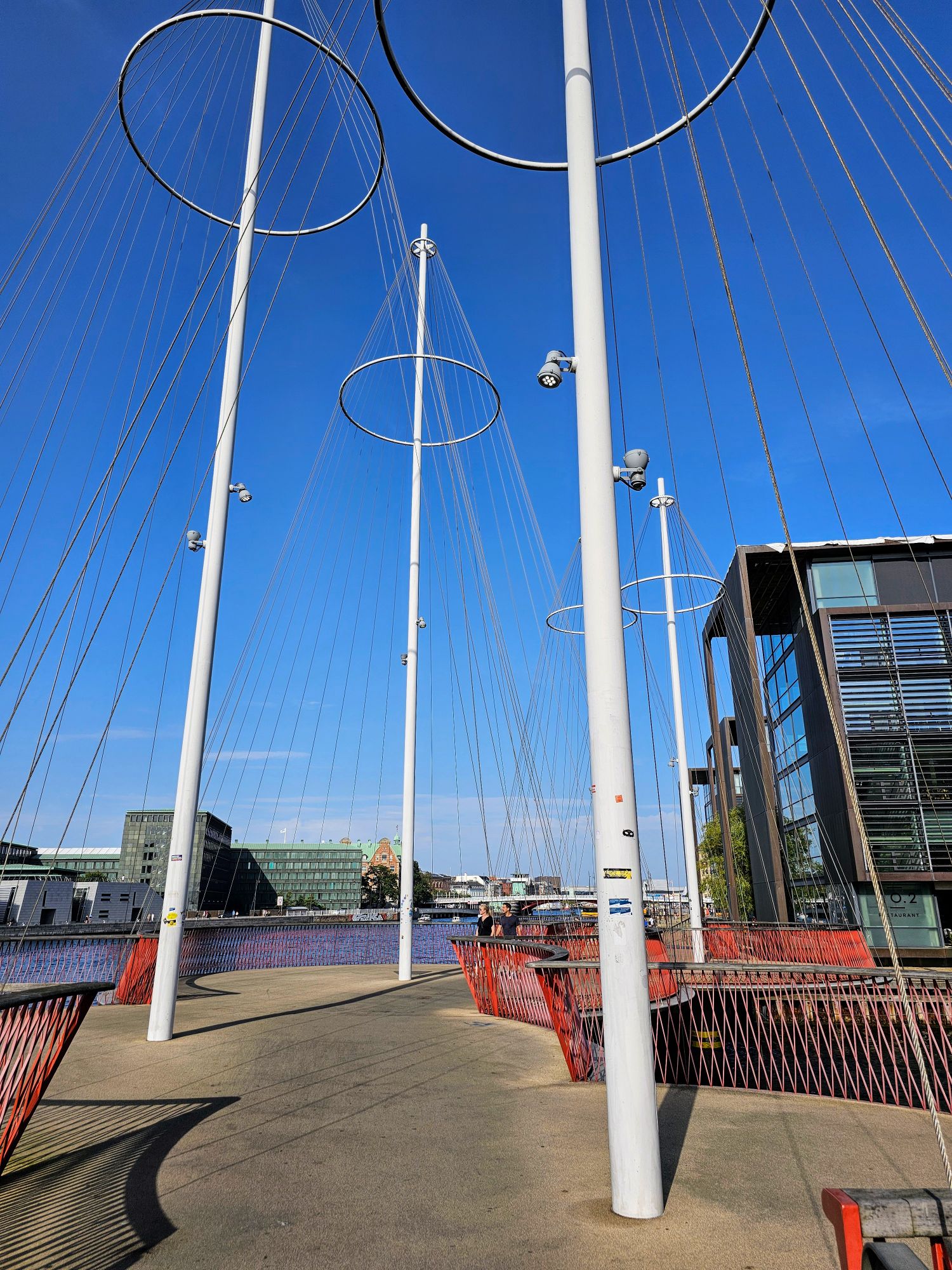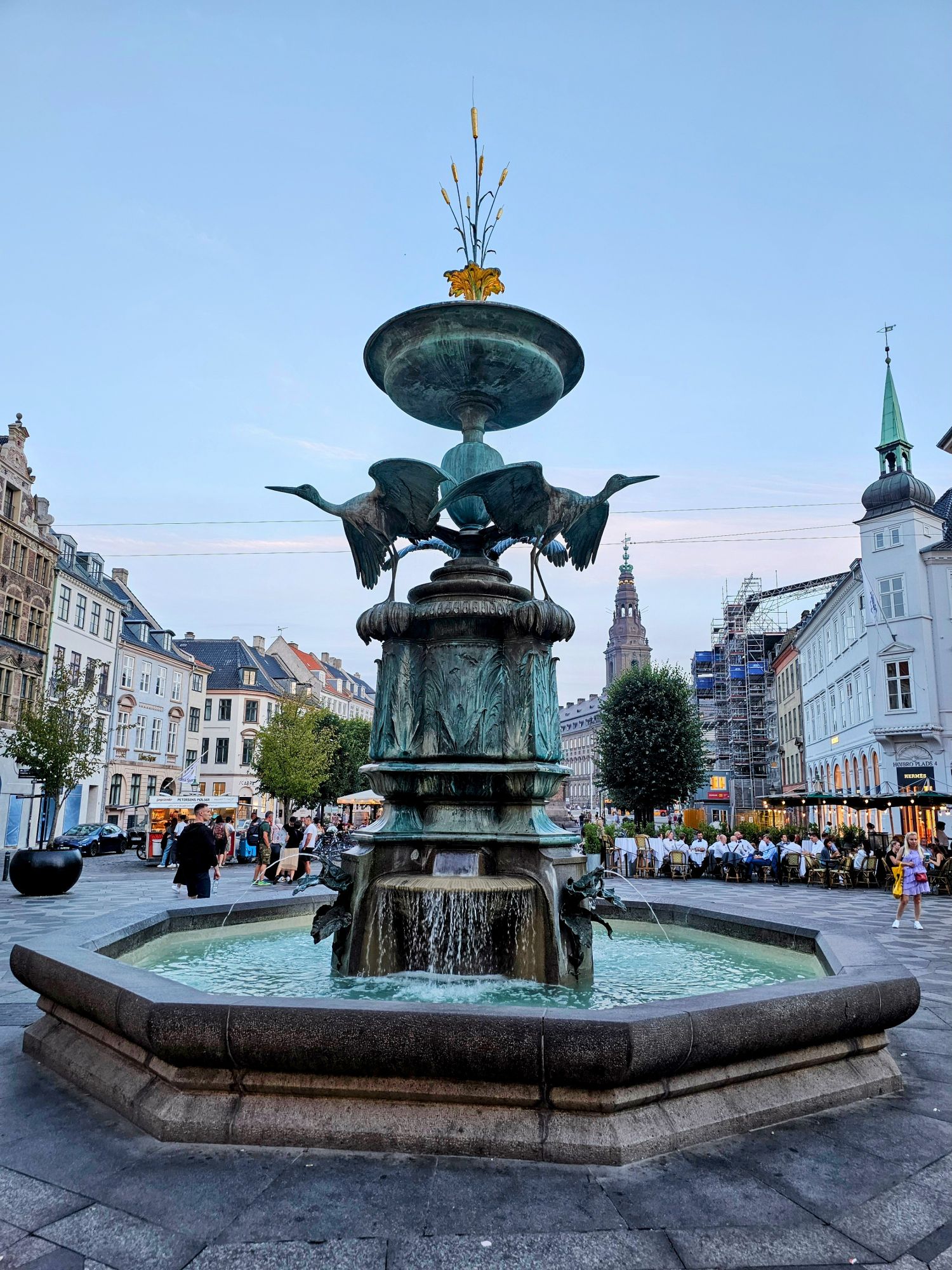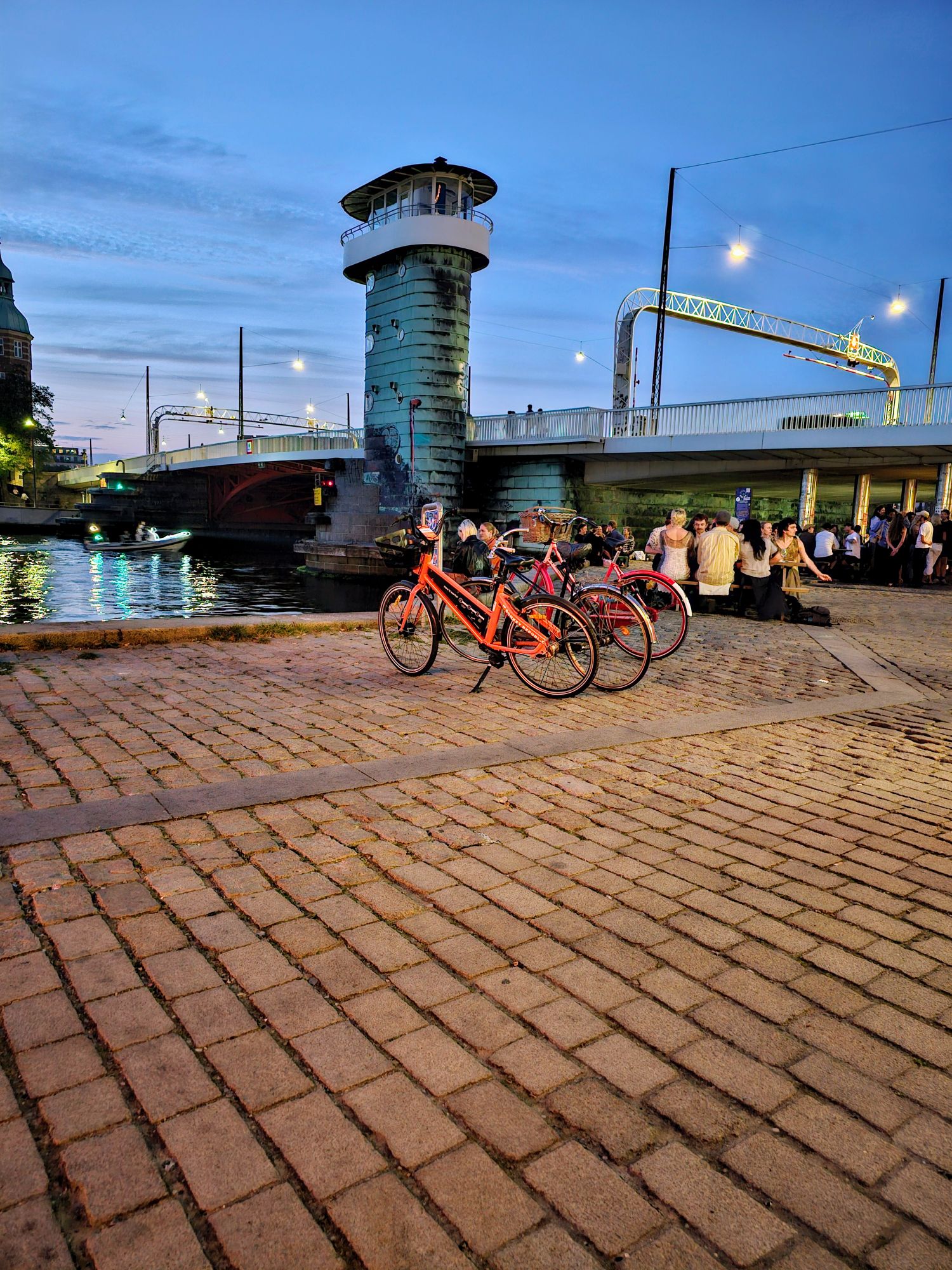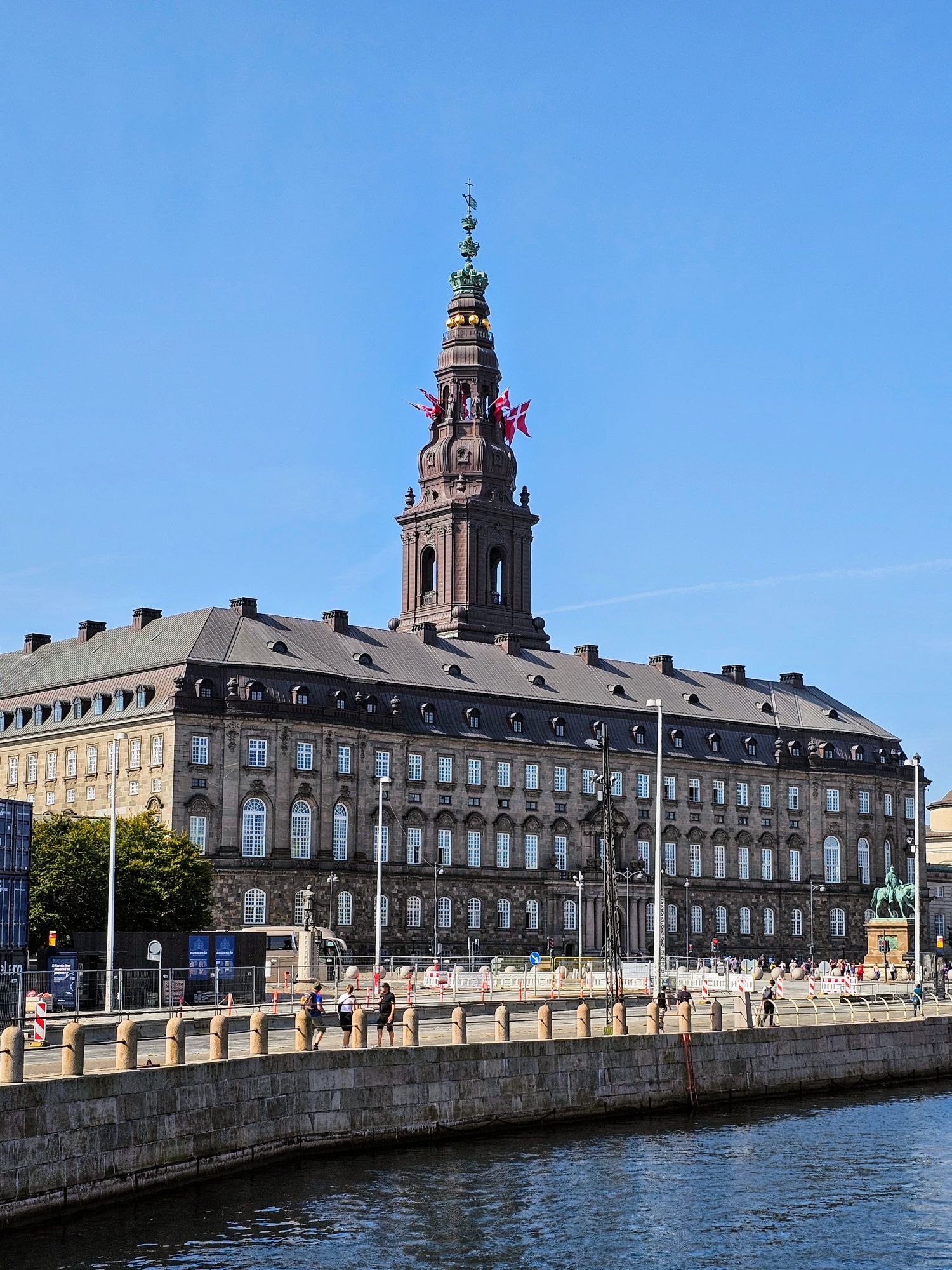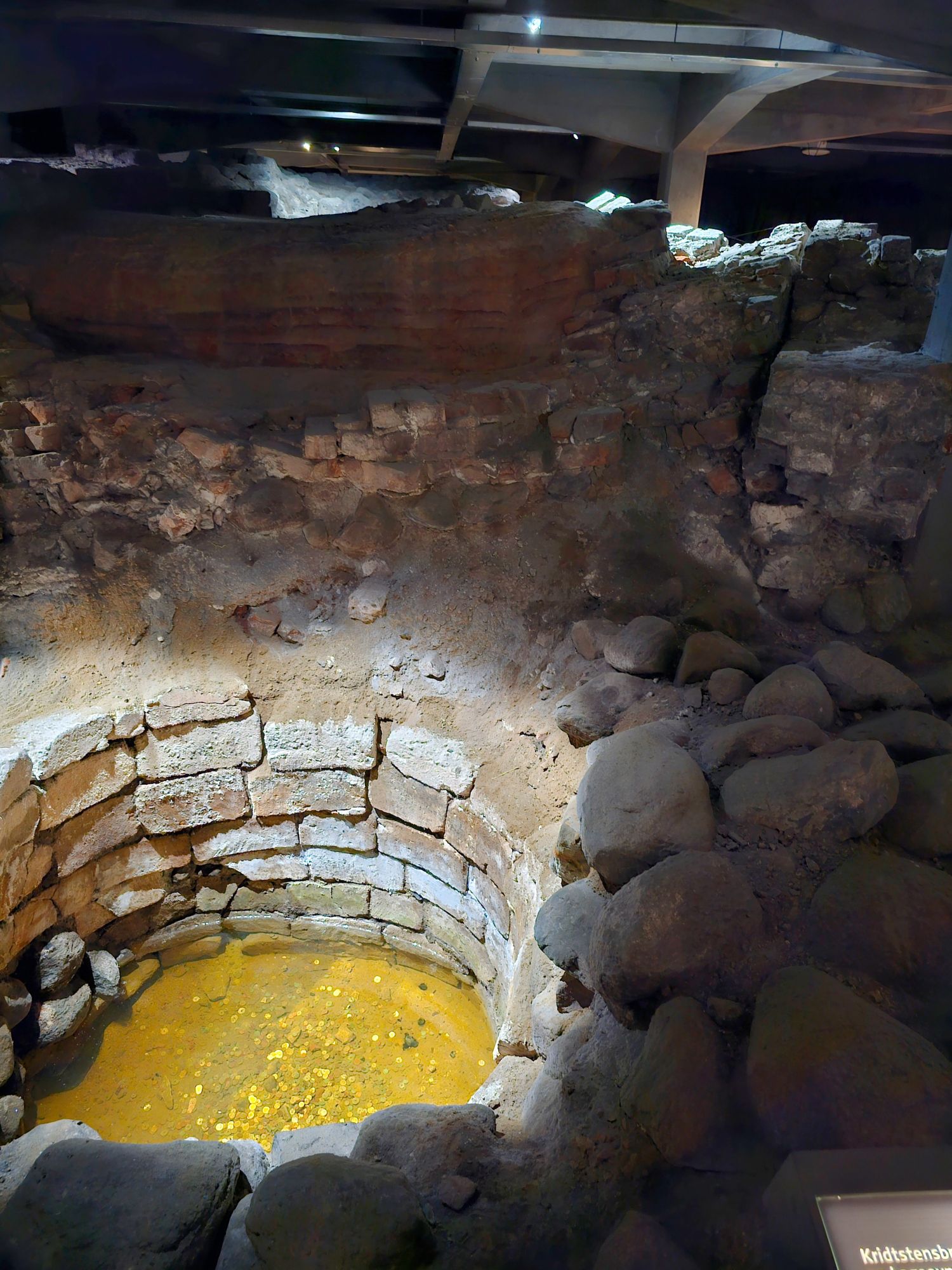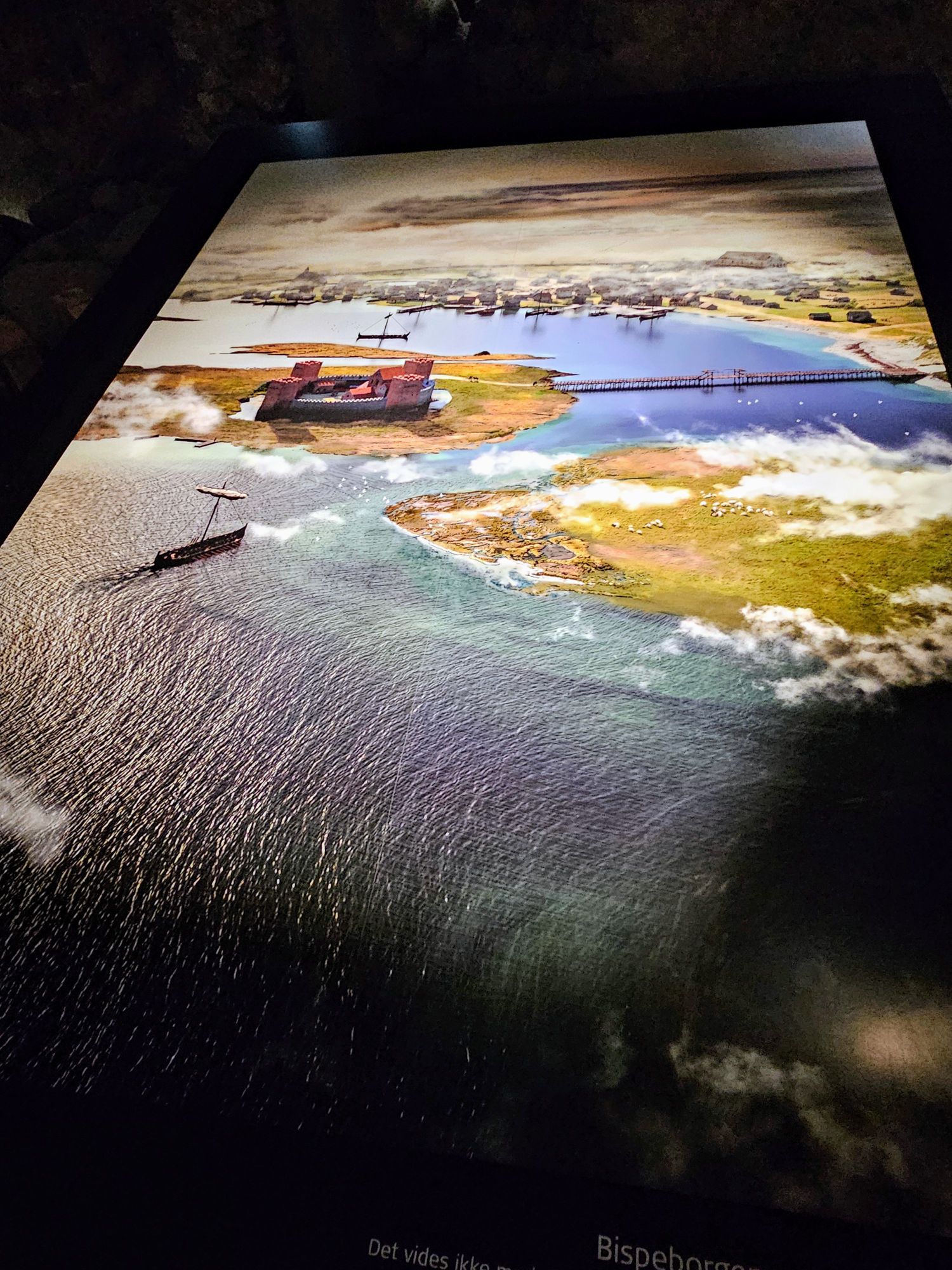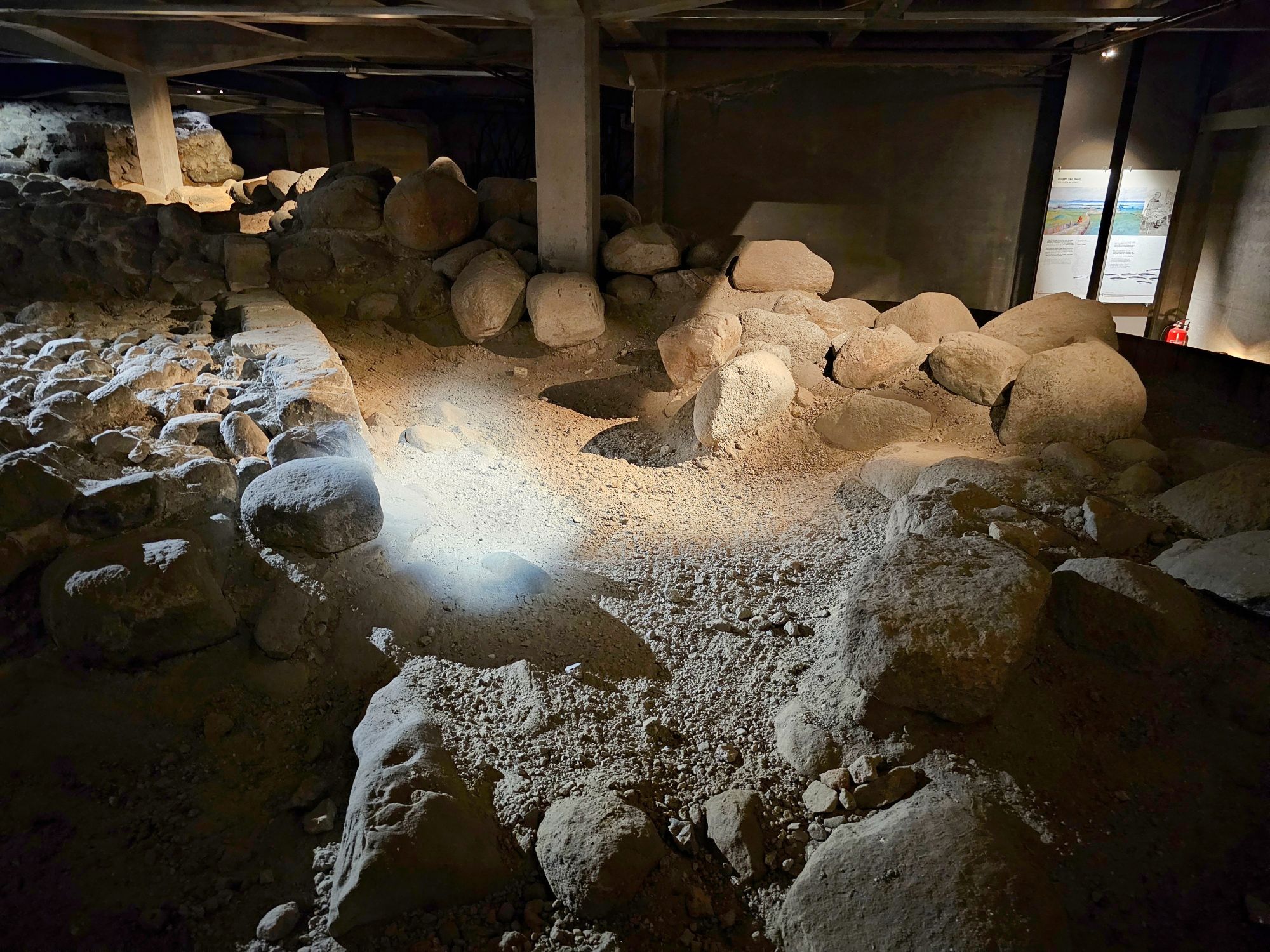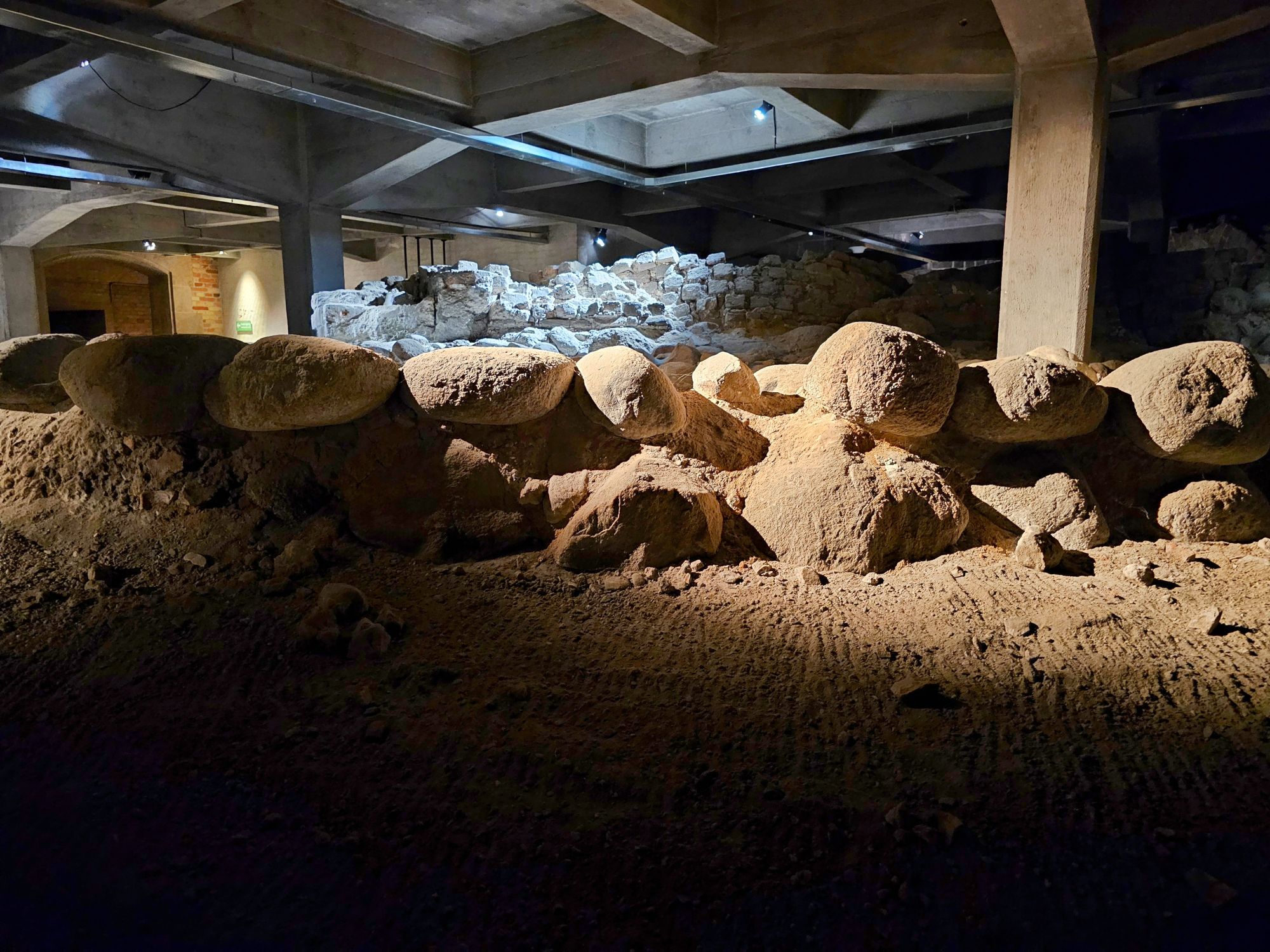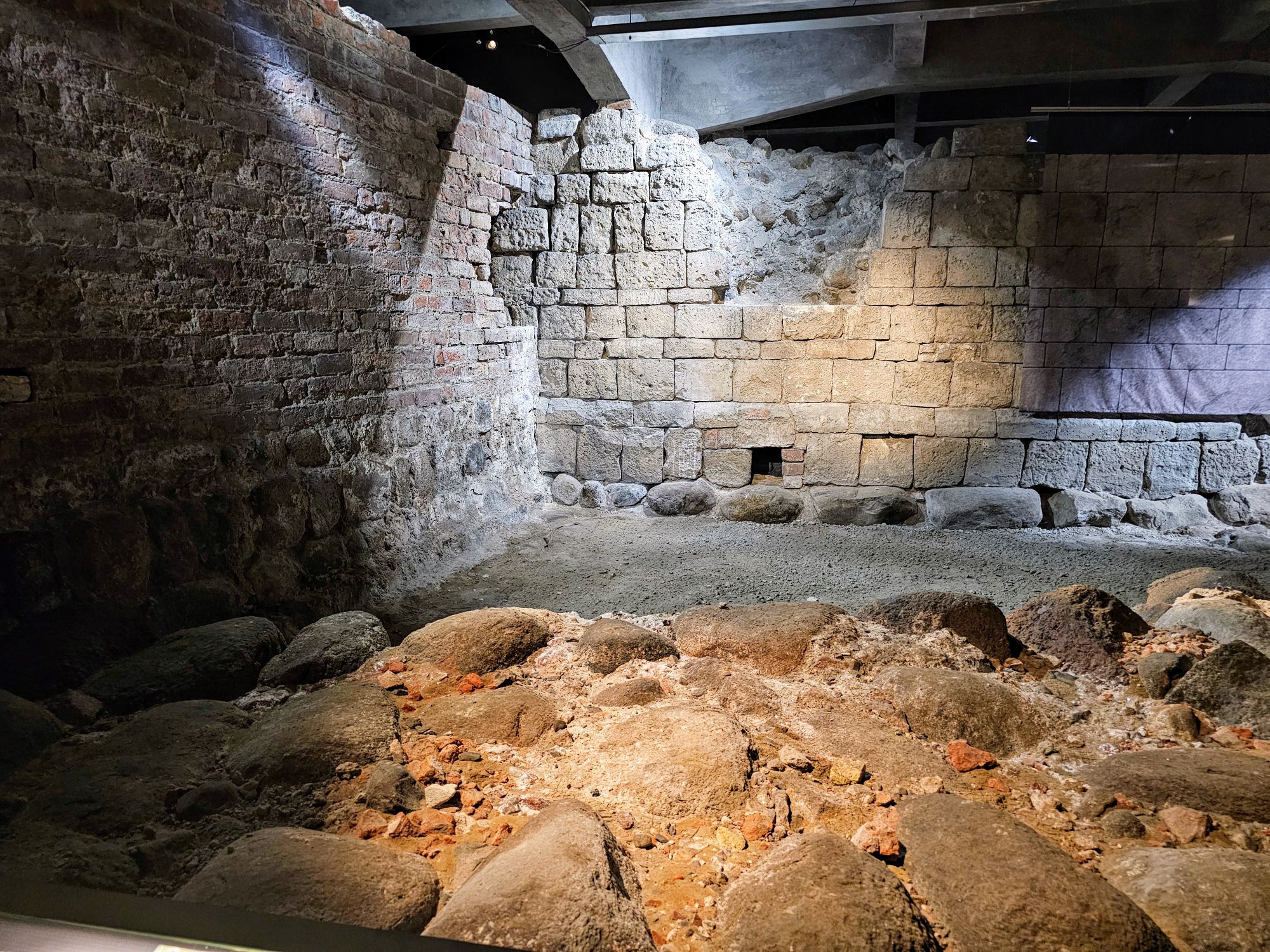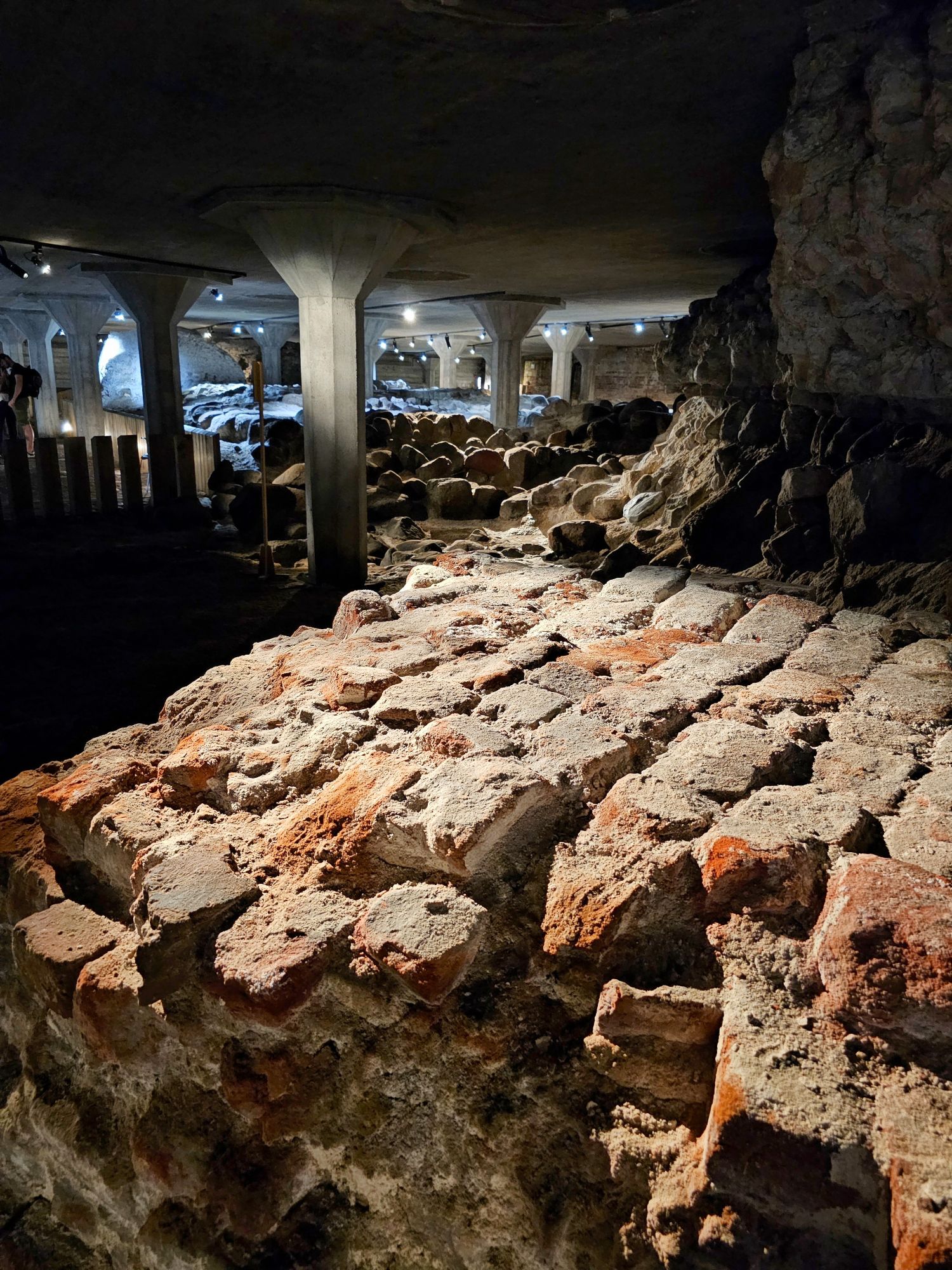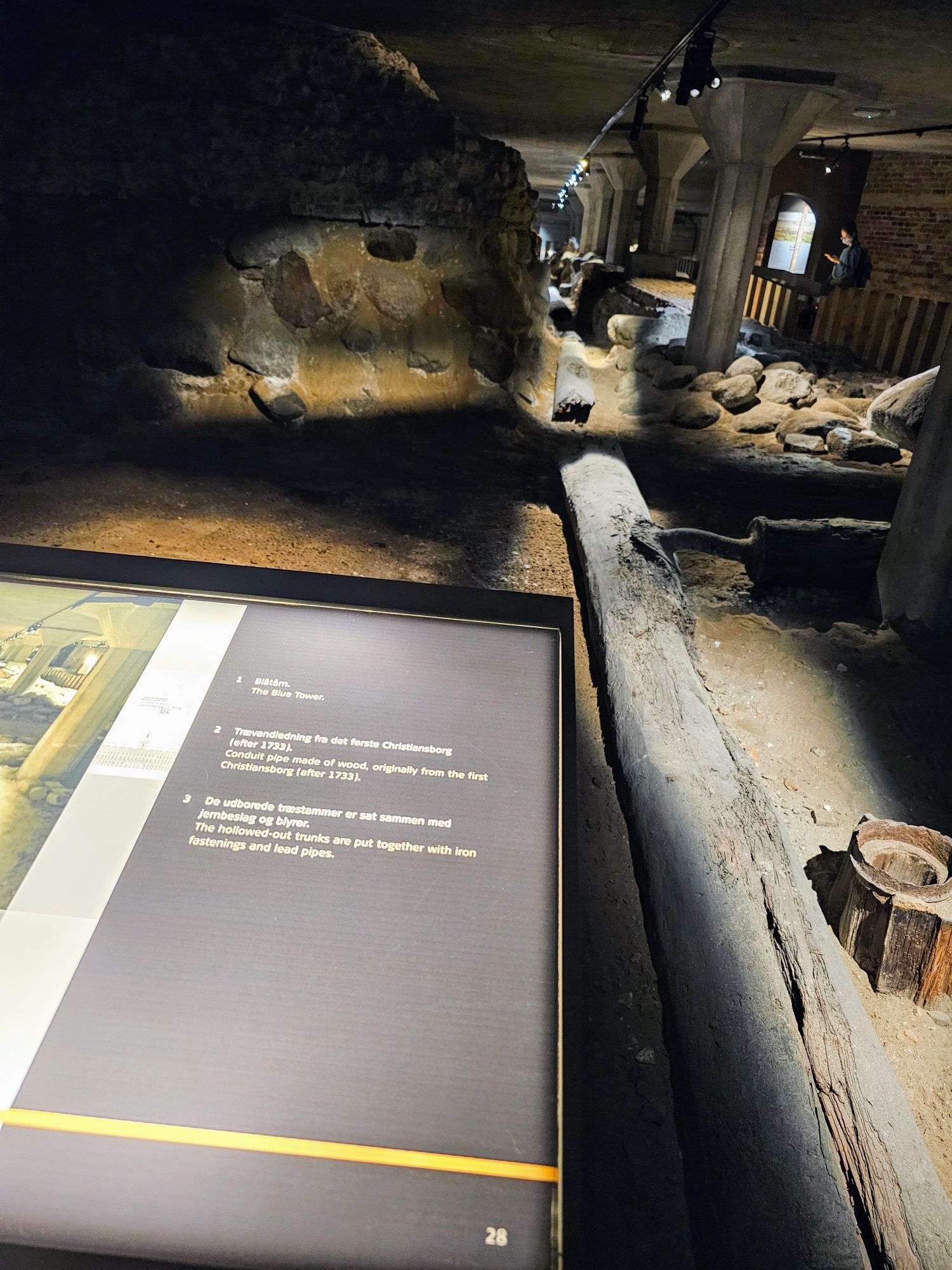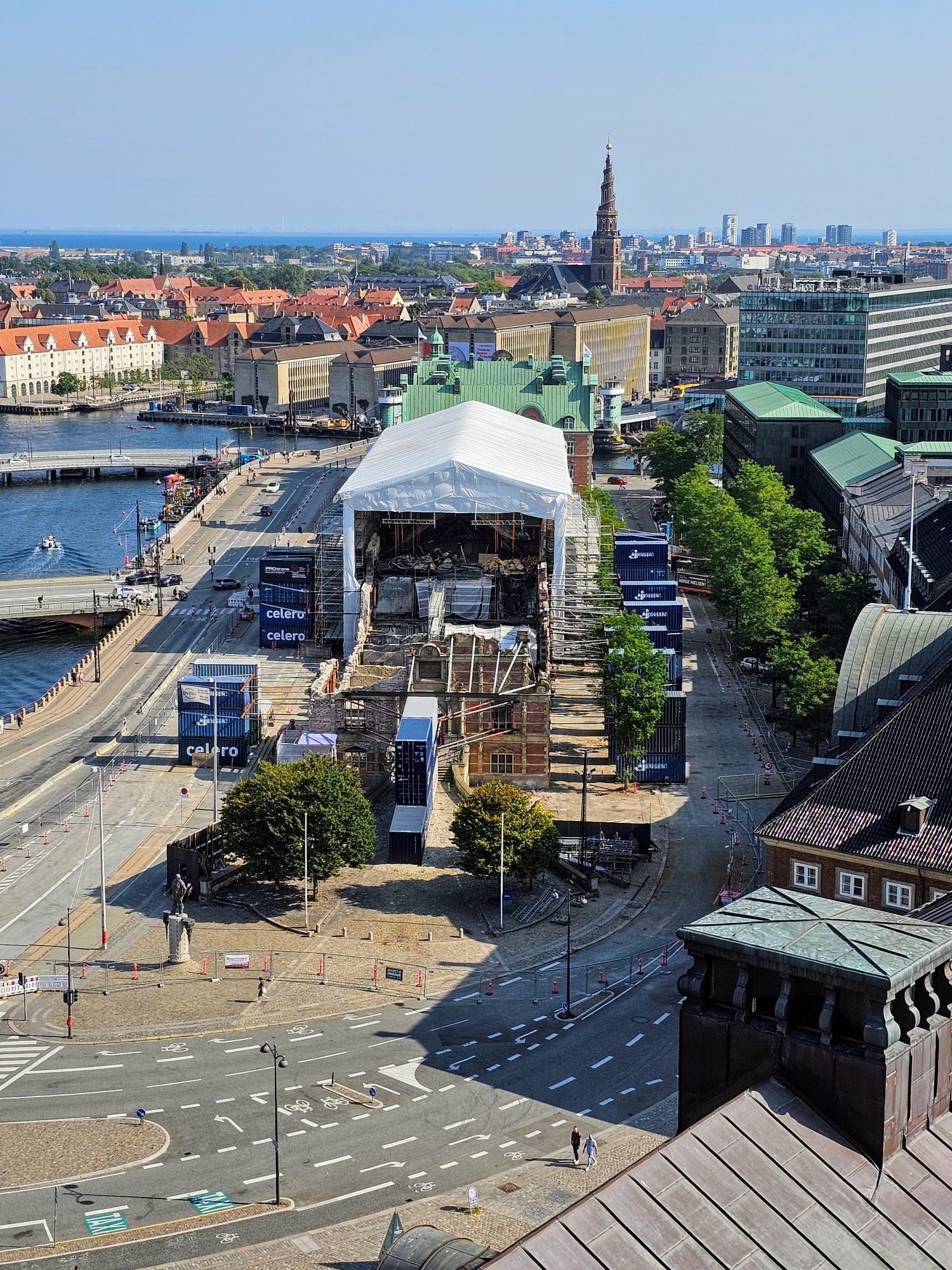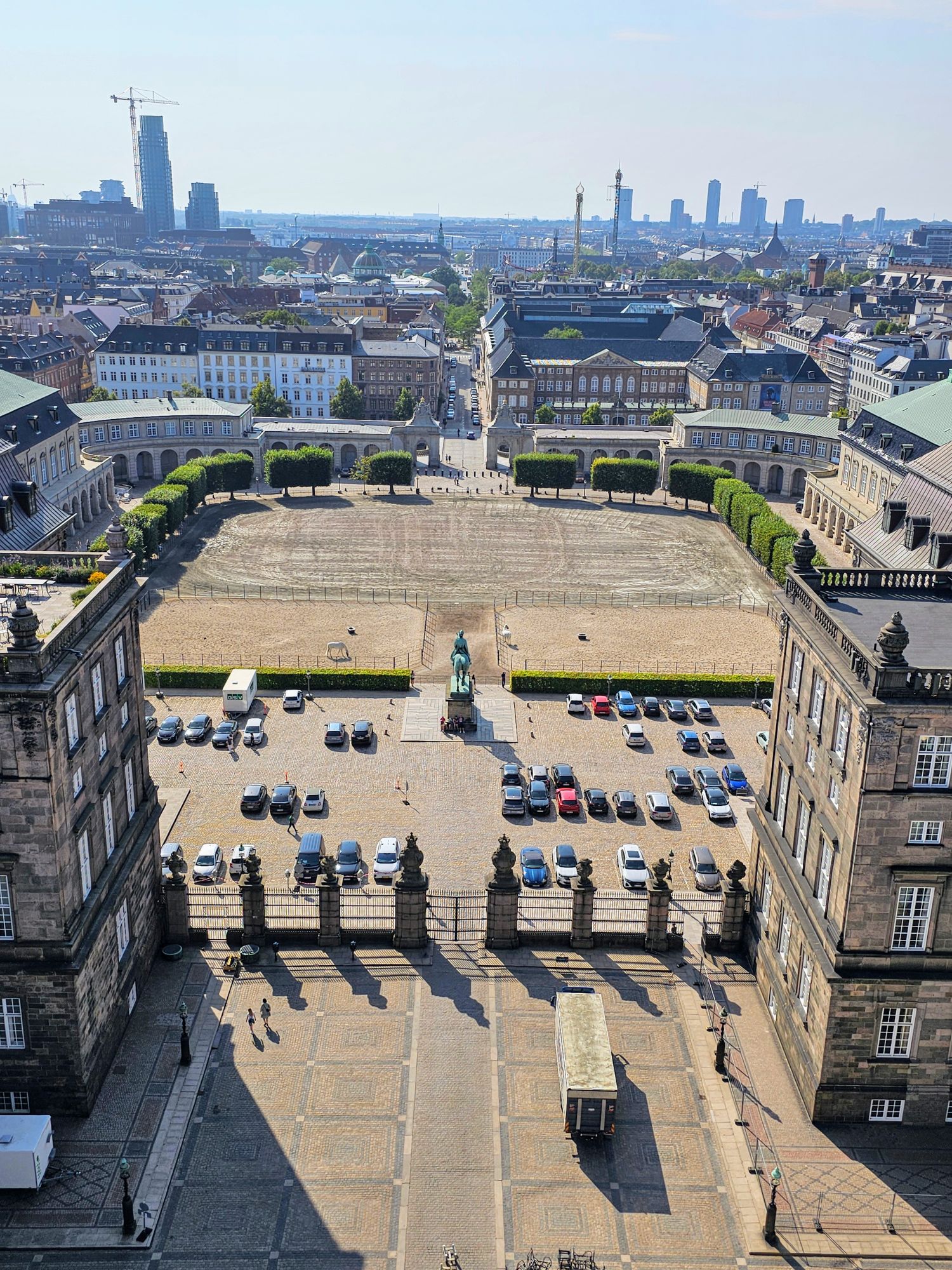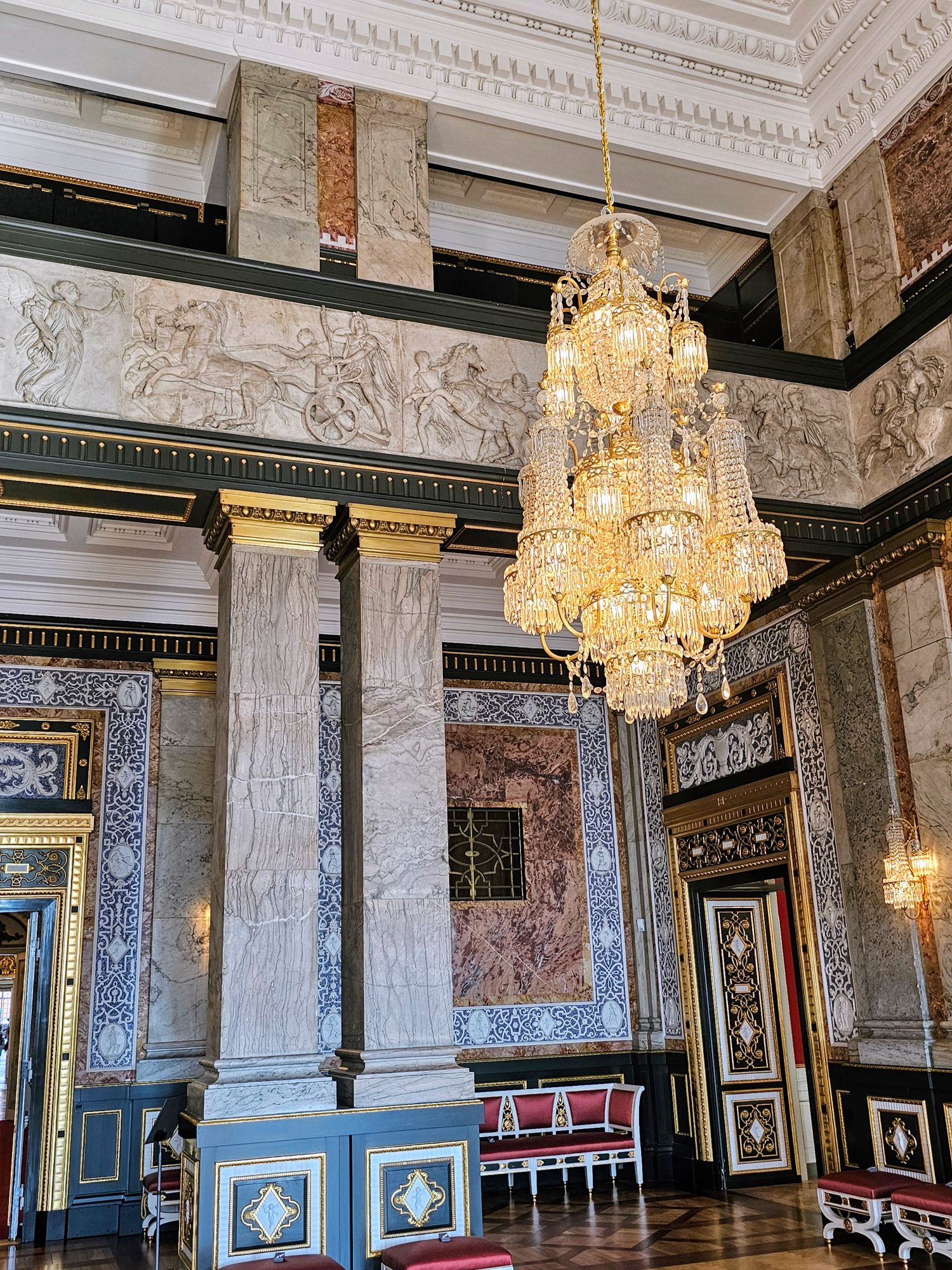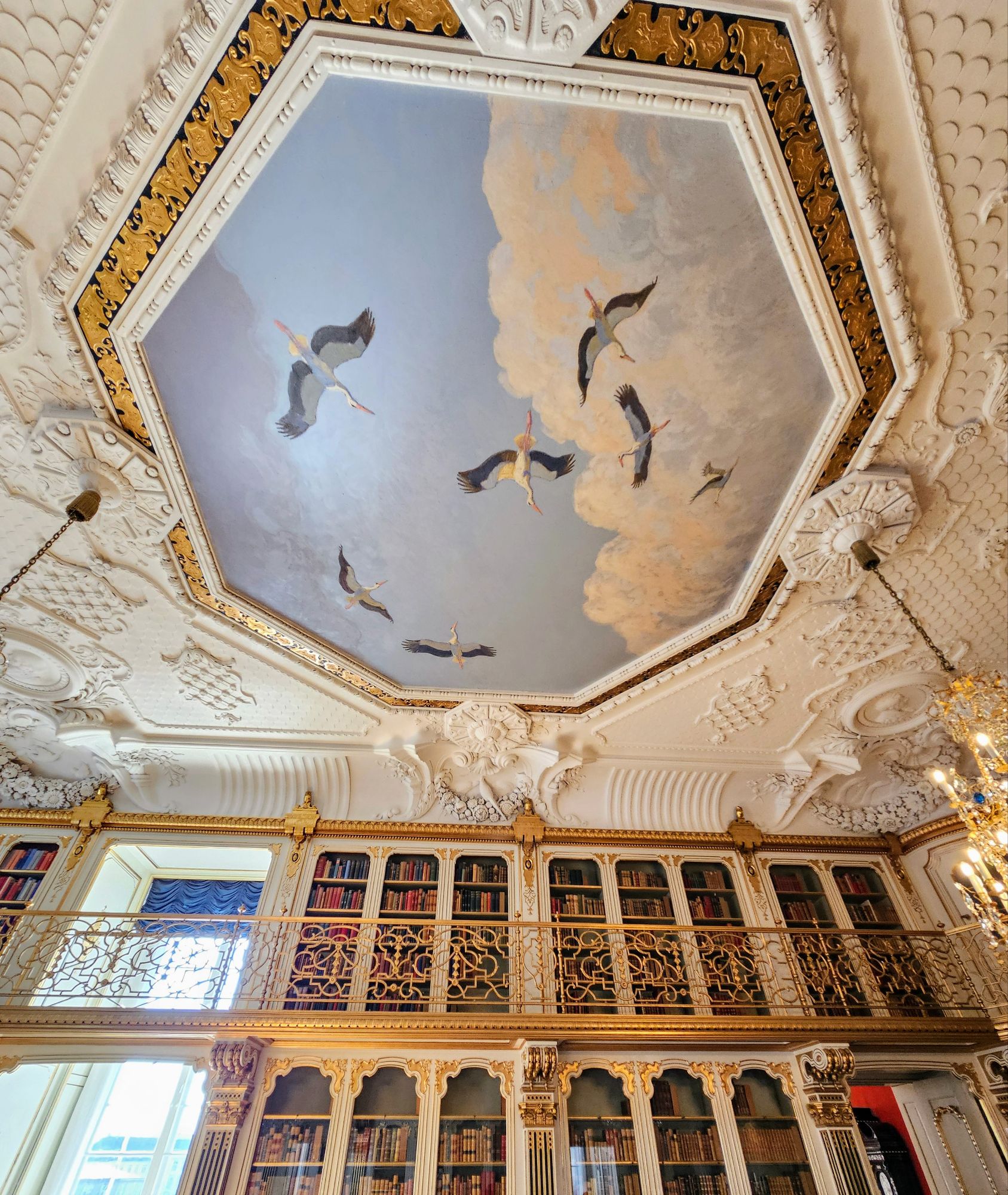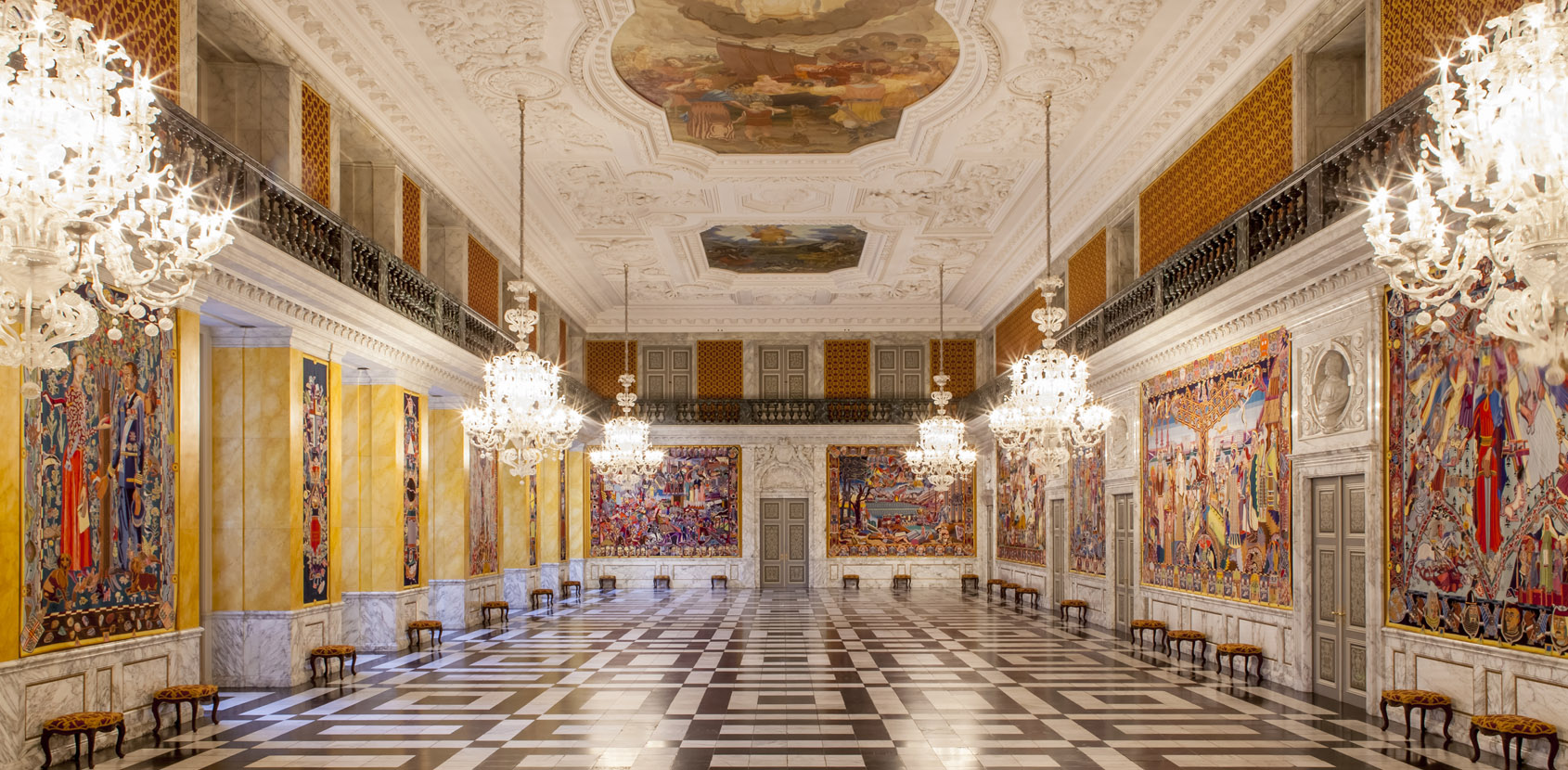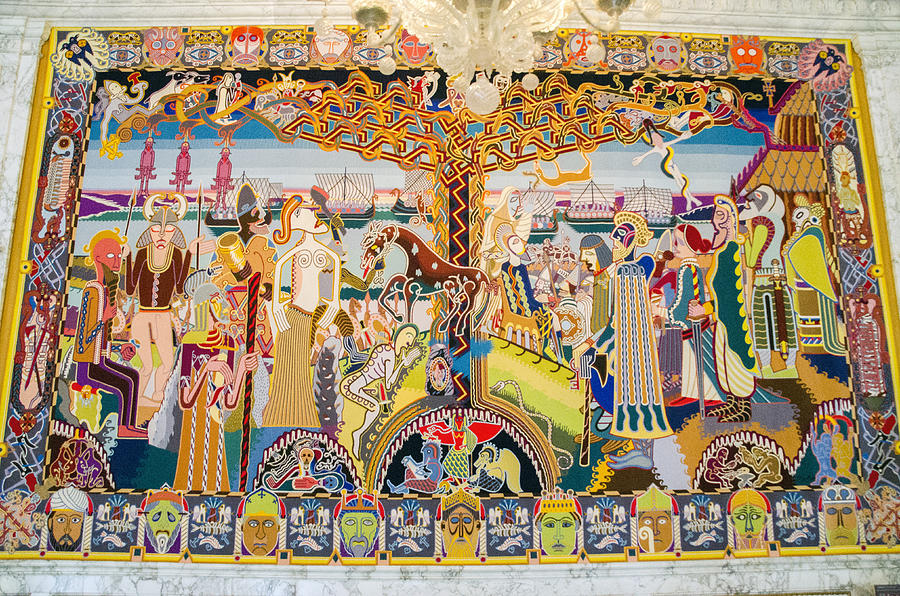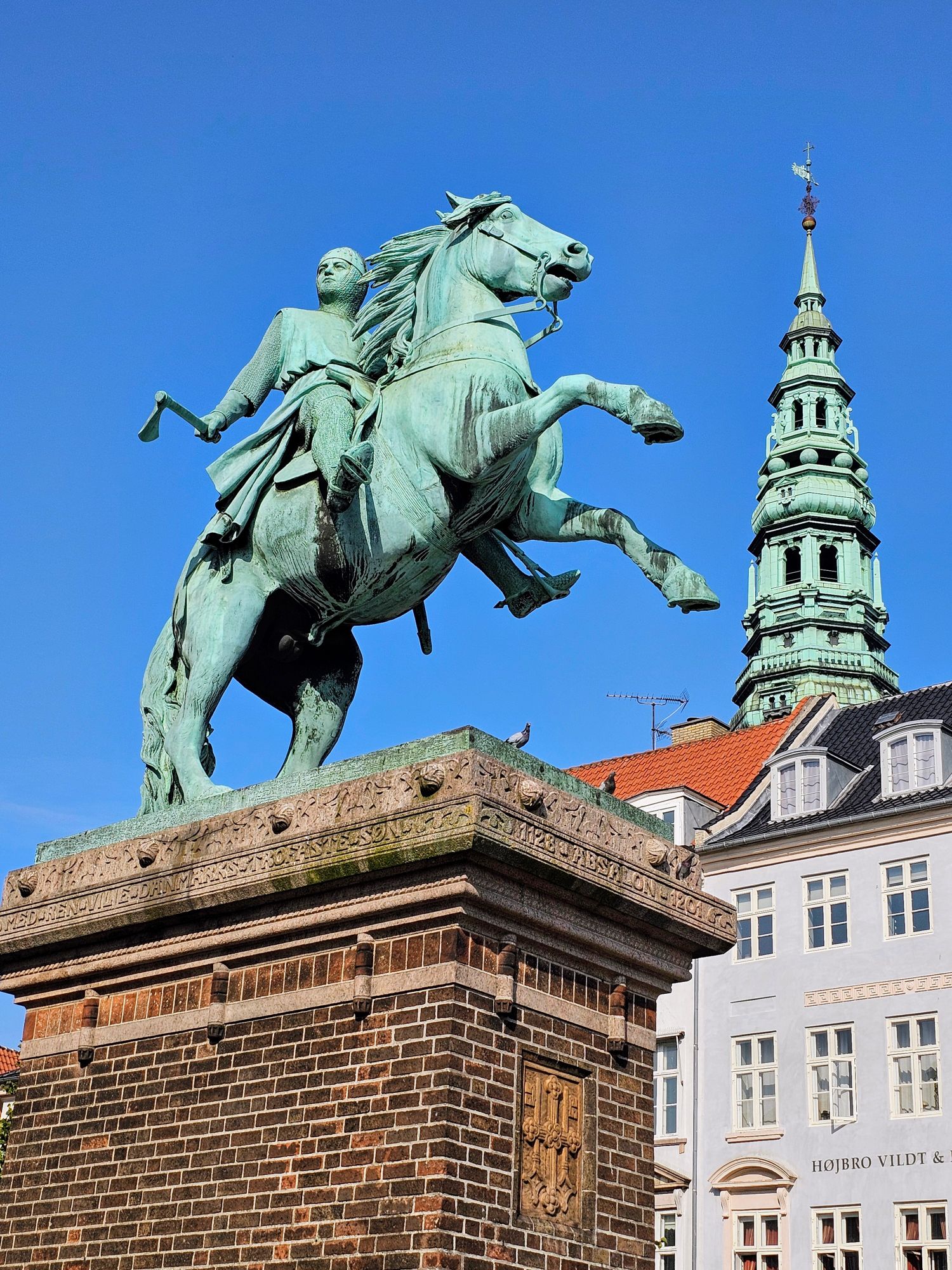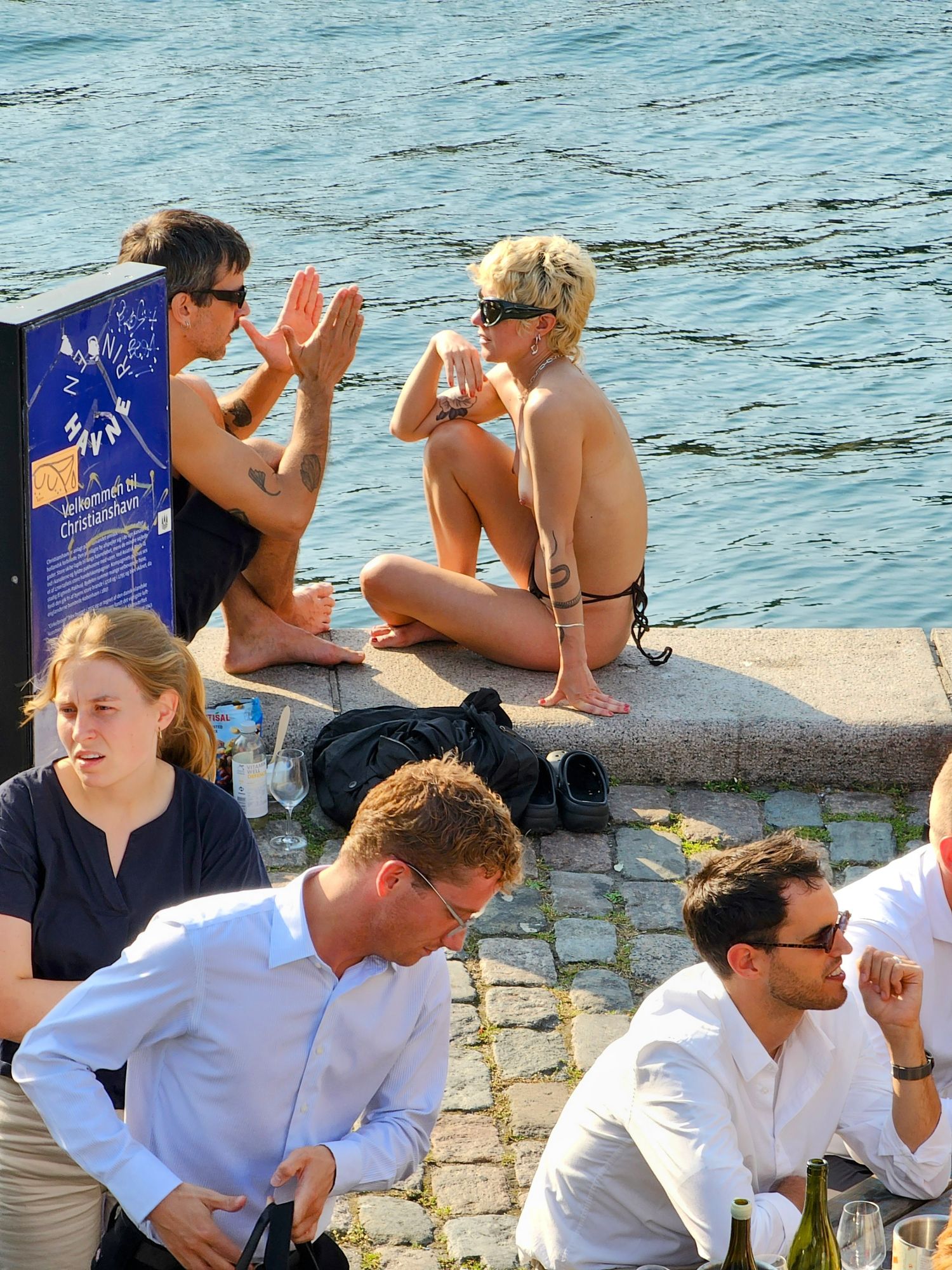Today our plan was to visit one of the top rated museums in Copenhagen. However, to start the day off we had an early lunch at Cafe Wilder, and we both had some of the best burgers we’ve had in months!
We don’t normally like to sit outside at restaurants in Europe due to all of the smokers, but fortunately we were early enough that we had the outdoor area to ourselves. By the way, on this trip we have seen fewer smokers than in other parts of Europe. Still far too many, particularly with the younger crowd who you think would know better.
Our mission for the day was a visit to the Ny Carlsberg Glyptotek, a museum that was made possible by Carl Jacobsen, the son of the founder of Carlsberg Breweries. The museum is filled with Carl’s personal art collection. It seems the Carlsberg family was quite generous with all things Copenhagen, as they keep popping up as benefactors all over the city. The central part of the museum is a beautiful large garden area.
This museum is mostly sculptures, which isn’t really our thing, but they did have some interesting ones. This is called “The Port”, so I of course had to get a photo of it. This was created by Constantin Meunier in 1895.
This dramatic one is “Perseus slaying Medusa”, sculpted by Laurent Marqueste in 1903. Pretty graphic for the time frame!
No sculpture based museum would be complete without some of Rodin’s work! Here is yet another version of “The Thinker”, which we have seen in several other museums.
Another Rodin work is quite impressive! This one is “The Burghers of Calais”, modeled in 1884-1895, and cast in bronze in 1902-1903.
This sculpture has an interesting backstory. In 1346, during the Hundred Years War, the French city of Calais surrendered to the English after an 11 month siege. King Edward III offered to spare the city if six of its leaders surrendered to him, supposedly to be executed. Edward demanded they walk out with nooses around their necks, and carrying the keys to the city.
Six leaders volunteered for this, despite their impending fate. Rodin’s sculpture depicts these leaders mix of defeat, heroic self-sacrifice and willingness to face death for the good of the city. After their surrender, Edward ended up sparing their lives when his wife intervened.
We then visited the two sections of the museum that hold Impressionist paintings, our favorites. The style of this first one seemed familiar to us, as he painted several pieces we just saw in Skagen, Denmark. This is “The Committee of the French Art Exhibition in Copenhagen 1888”, painted by P.S. Kroyer in 1889.
Carlsberg Brewery founder J.C. Jacobsen tried to get funding from the Danish government to send Danish art to a Paris exhibition, and when that was unsuccessful he ended up funding the entire project himself. This painting depicts the group that selected which works would go to Paris.
This is maybe not his best work, but I was happy to see a Monet in the museum. This is “Flood at Giverny” from 1896. Giverny is the spot where Monet painted his famous water lily paintings.
Just when I thought I had seen nearly all of Monet’s work, something like this pops up. This is “Les Pyramides at Port-Coton”, from 1886. Love the colors! Monet painted six versions of this, with four of them in museums, and two in private collections (damn shame).
Another gorgeous Monet I’ve not seen before, this is “Shadows on the Sea” from 1882. Again, just love the colors!
It was also a surprise to see a Vincent Van Gogh painting. Remember, this museum is the personal collection of the Carlsberg Brewery family, so having paintings by such esteemed masters is impressive! This is “The Pont du Carrousel and the Louvre” from 1886.
This is “Young Girls” by Renoir from 1877, another impressive piece. I’m sure I saw this in my Humanities textbook back in college!
You wouldn’t know it from the looks of it, but below is a Picasso, “Spanish Lady in Crinoline”, from 1901, during his so-called Blue Period. Quick fact, did you know that during the late 1850’s to late 1860’s that about 3,000 women died from wearing the hooped crinoline dresses? Apparently they easily caught fire from bumping into candles, and were difficult to remove. The things you learn doing research while writing!
Surprisingly, we ran across another Van Gogh! This is “Pink Roses” from 1890.
There were a bunch of Roman busts in the museum, maybe 100? This one is of Caligula, the Roman emperor from AD 37 until his assassination in AD 41. He has a remarkable story that is too long to depict here, but I found it interesting that the bust looks just like the nasty young king from Game of Thrones!
The museum even has some Egyptian mummies!
As well as several sarcophagus’. What a diverse collection!
As we were leaving we came across yet another Monet painting. This one is “Windmill and Boats near Zaandam”, from 1871.
Kim saw this small sculpture of Joan of Arc by Paul Dubois. This small wax work was made in preparation for a statue to be placed in front of the cathedral in Reims, France.
Here is the final sculpture in front of the cathedral in Reims, which we visited two years ago. Pretty cool when our trips intersect!
One last look at the garden in the middle of the museum as we were departing.
On our way back to our hotel we crossed this bridge, known as the Circle Bridge, which is supposed to depict the masts of sailing ships. We cruised under it during our prior boat tour.
On the way to dinner we passed by the Stork Fountain. The fountain was an anniversary gift to Prince Frederik and Princess Louise in 1894. According to Wikipedia it has been a tradition since 1950 for newly graduated midwives to dance around the fountain. Do they still have midwives in Copenhagen?? Regardless, we didn’t see any dancing.
It was such a beautiful night that we snagged some beers from the Kayak Bar after dinner and relaxed on the waterfront in front of our hotel. We seriously lucked out on weather!
If you made it this far you get a cookie! Up next we visit the Nyhavn district, some churches, a memorial, and the famous Little Mermaid!
